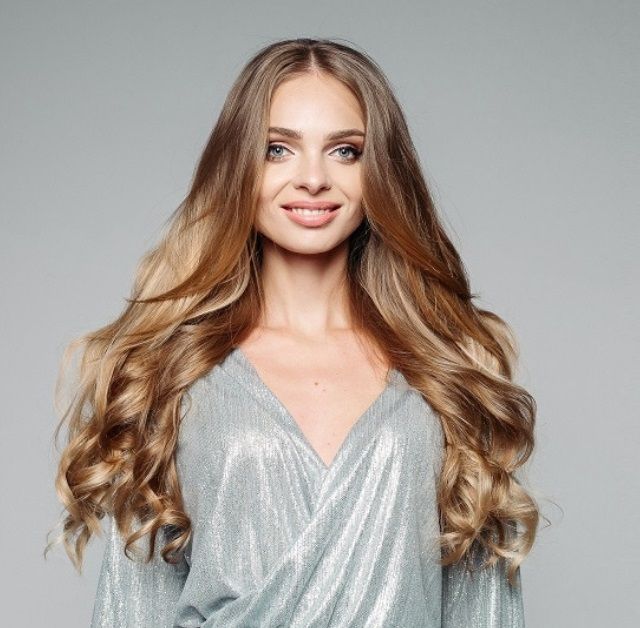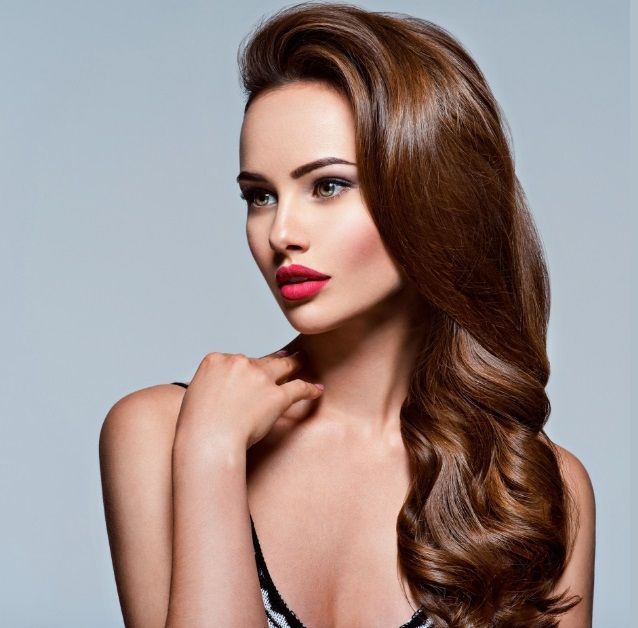All of us know and agree that braids, like dutch braid, are the go-to hairstyle for any occasion, suiting any time of the day. It is rightly said by Roman Payne
“A girl without braids is like a city without bridges.”
Braiding your hair is an amazing art; how your fingers part your hair in multiple divisions, twisting and trying and weaving each of the strands with such delicacy and intricacy that it results in breathtaking, awe-inspiring, and beautiful art woven into the hair. Though it may take some time and effort, tiring your arms down a bit, the final masterpiece is a gorgeous proof that the effort was all worth it.

There are several different kinds of braids, several methods by which you can twist and weave your hair into something so composed and pretty. Some styles of braids are simple, as simple as taking three strands and just overlapping them, while others may take a lot more effort, precision, and time than the easier ones.
One of the kinds of braids that require more effort, skill, and precision is the Dutch Braid.
Weaving your hair into a Dutch-style braid requires absolute focus and attention, as you need to treat every strand of the hair with particular attention, twisting it through specific ways, so that you can achieve the perfect, steady and attractive hairstyle. The name Dutch braid might water down the spirits of some, as it is a little more difficult than other styles of braiding your hair. But worry not practice and patience is all takes. Just for your ease, we have brought you a complete tutorial on how to do a Dutch braid and a little bit of information about it. With the help of this guide, a bit of practice, a dose of dedication, and a whole lot of patience, you will be able to master the Dutch braid perfectly.
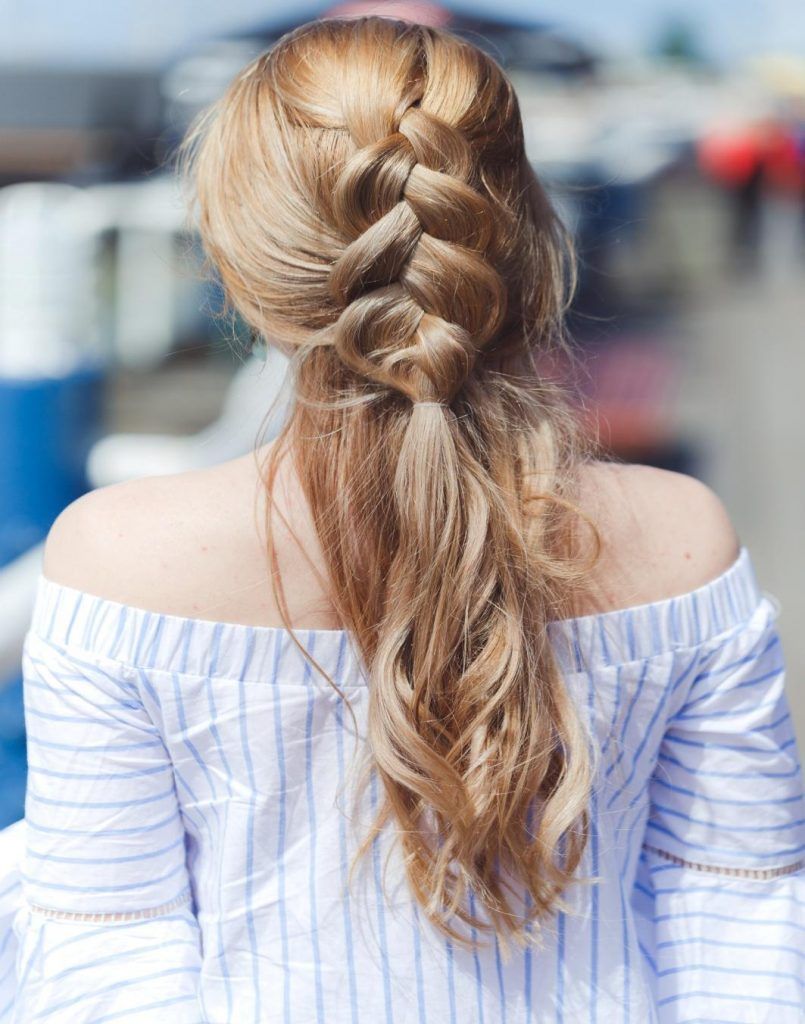
What Is A Dutch Braid Exactly?
The Dutch style braid is another one of the types of braid that require specific attention and practice since it is more complicated than others. In other words, the Dutch braid is also known as the “Inverted French braid” or the “Pineapple Braid”. It is a commonly loved hairstyle for daily wear or casual occasions like a shopping trip or going to school because of how it keeps your hair composed while looking stylish and chic. It is called the inverted braid because the method to tie it is quite similar to the one used for doing a French braid, only that the strands of hair are interweaved under each other instead of weaving into each other above like it is done for the French braid. The final result somewhat resembles the look of a whole pineapple, hence giving it the alternative name of “Pineapple Braid”. When sections of hair are Dutch braided separately, they go by the name of “cornrows”.
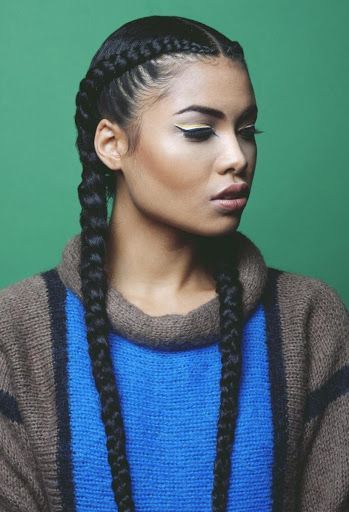
Were Dutch Braids Originated In Netherlands?
Since Dutch braid is the inverted version of the ever so famous French Braid, which was originated in South Africa, Dutch braid also has its roots in the exact same region.
The Dutch braid was not invented by the Netherlanders as many people wonder, instead, this hairstyle was adopted by the South African immigrants that came to the Netherlands.
African women used to tie their hair into various kinds of braids to protect them from the damage caused by the sun. One of their famous braids is known as French braid. The inverted version of a French braid was also widely sported by the African women and it was later adopted by the people in the Netherlands. This is how it got its name “The Dutch Braid” and is now a major braiding technique that is loved by girls and women all around the world.
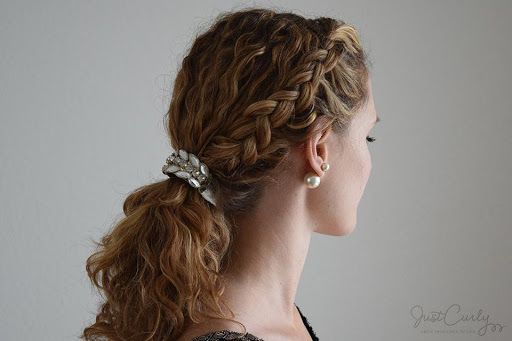
How To Dutch Braid Curly Hair:
A Dutch braid is exactly the opposite of a French braid. It mainly consists of twisting and overlapping different sections of your hair while adding more chunks of hair on the way. If you want to learn how to tie your beautiful curly locks into a simple Dutch braid in eight easy steps then you have come to the right place. Here is an elaborate guide on achieving that perfect Dutch braid that you see on Pinterest. Let’s get started!
- Step #1:
The first step is to prepare your hair for the braid. Brush your hair thoroughly to get rid of any tangles present in your hair. If your hair is greasy, the best option is to wash it and then braid your hair for the best results.
- Step #2:
Start with hair on the crown of your head and section them into three equal parts. You can also include your bangs if you desire and create a swept back look. Hold each section between your fingers firmly and start braiding in the reverse direction which means, instead of twisting your braid sections upwards, you have to twist them under.
- Step #3:
Once the base three strands form an inverted simple braid on the crown of your head, this will be your main portion to work with. Just like in French braid, you add hair chunk by chunk into each section to create a beautiful texture, the Dutch braid requires the same technique.
- Step #4:
Grab a 1 to 2-inch section from above your ear and incorporate it into your three strand braid but instead on adding this chunk of hair from above the braid, add it from under the braid and join it with the closest section. Hold the Dutch braided section into your fingers with the rest of your hair and repeat this step on the other side.
- Step #5:
Keep adding in hair one by one to the section that ends up at right and left to achieve that connected Dutch braid effect. Continue the braiding process until you reach the nape of your neck. Make sure all the hair on your head is securely incorporated into the braid till you reach the nape of your neck and there is no stray hair.
- Step #6:
Tie your braid on the nape of your neck and the leave the rest of your hair in the form of a ponytail or continue braiding till the end of your hair. Once you are done braiding, secure it with a hair tie and pull on the strands of your braid to add a bit of volume to your Dutch braid.
- Step #7:
Pull out a few strands of hair from the front to frame your face nicely and add a softer look to your hairstyle. Finish off with a strong hold hairspray if your hair slips out of the braid quickly. Girls with layered hair can use bobby pins to pin down the hair poking out from the braid and make it look neater and proper.
- Step #8:
The perfect Dutch braid is now complete. You can accessorize your hairstyle with elegant hair bands, decorative hair ties, or other hair jewelry in accordance with the occasion you are going to attend and make your Dutch braid look even more appealing and gorgeous.
Now that you have the whole procedure of making a Dutch braid up your sleeve, you can tie your own or your friend’s hair into a Dutch braid for any occasion you want and incorporate it in several other hairstyles.
Difference between French Braid and Dutch Braid
There are two types of braid that take hair section by section and incorporate them into the braid. One is the French braid and the other is the Dutch braid. A Dutch braid is basically the inverted version of the simple French braid. While Dutch braiding each section has to go under the braid instead of coming over the braid. This simple difference makes the Dutch braid pop out more than the French braid.
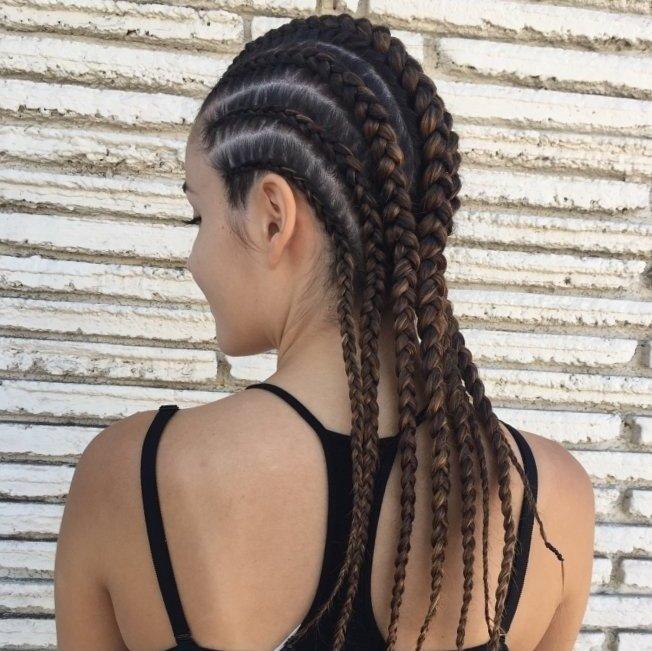
Is The Dutch Braid Same As Cornrow?
The Dutch braid was initially worn by South African women. Cornrows are basically several dutch braids side by side. They are called cornrows because when multiple dutch braids are combined the mimic the appearance of a cornfield.
Why Can I French Braid My Hair But Not Dutch Braid
French braid is considered easier by a lot of people because the steps to achieving a French braid is similar to a conventional braid. The only difference is that you have to incorporate sections of hair in each step. Setting your hands on Dutch braid can be a bit difficult and it is totally okay! Dutch braid required plaiting in the opposite direction which can take some time to practice. Once you have perfectly practiced the Dutch braid, you will be adding Dutch braid accents is almost all of your hairstyles, we bet!
Dutch Braiding With Extensions
Don’t have hair long enough to tie it into a Dutch braid? Don’t worry! Hair extensions will always have your back. Section your hair off from the crown of your hair and clip them up. Add hair extensions on the hairline under your crown and attach hair extensions in accordance with your requirements. Unclip the top section of your hair and blend them with your hair extensions. Brush your hair and follow the Dutch braiding steps mentioned above to achieve a polished and beautiful Dutch braid.
Pro Tips to Modify Your Dutch Braid
If you want to further beautify your Dutch braid then follow these steps.
Pancake your Braid
Always add volume to your braid by gently pulling out each section while massaging it to make your braid look thicker and bigger. This technique is widely used by hairstylists to make the braid look bigger and more dramatic.
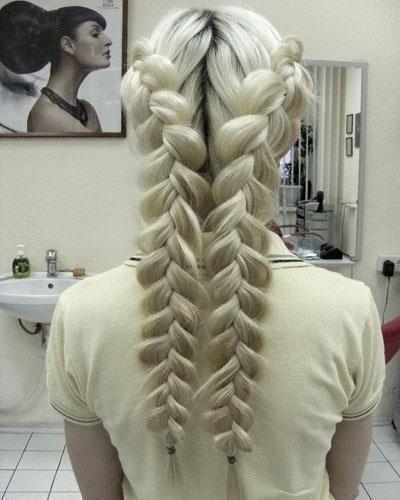
Leave A Few Inches Of Hair
The best way to make your braid look bigger and volumized is to leave a few inches of hair at the end of the braid. If you will braid your hair till the end, it will look stiff and thin which is not a very flattering look.
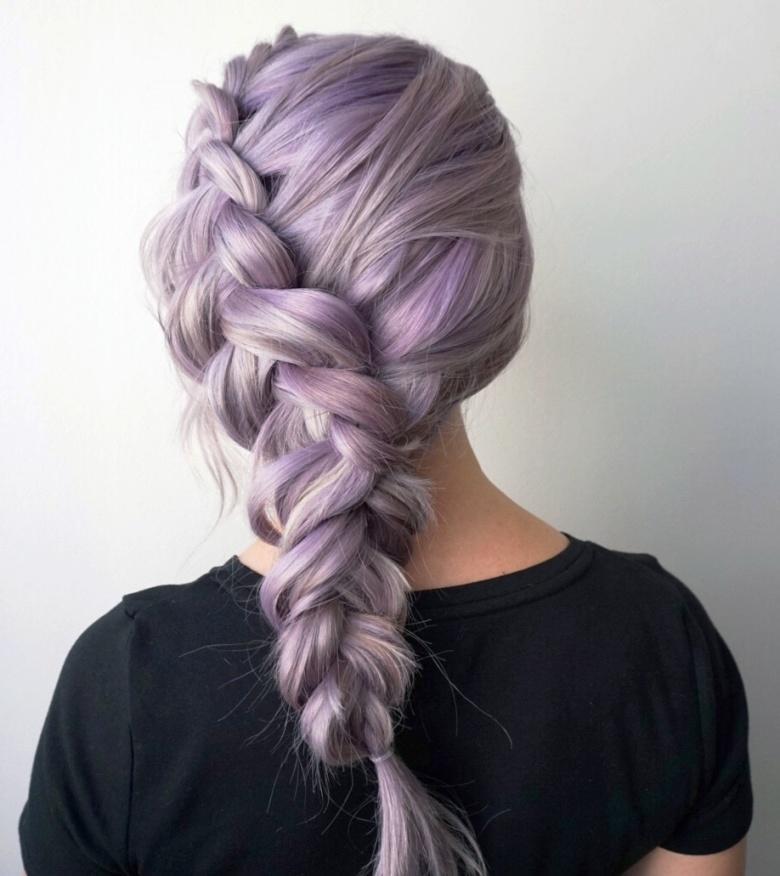
Use Volumizing Powder
To make your braid look even bigger and puffed up, use a high-quality volumizing powder on the roots and each section of your braid. Thoroughly massage the powder into your hair to get the best results of that product.
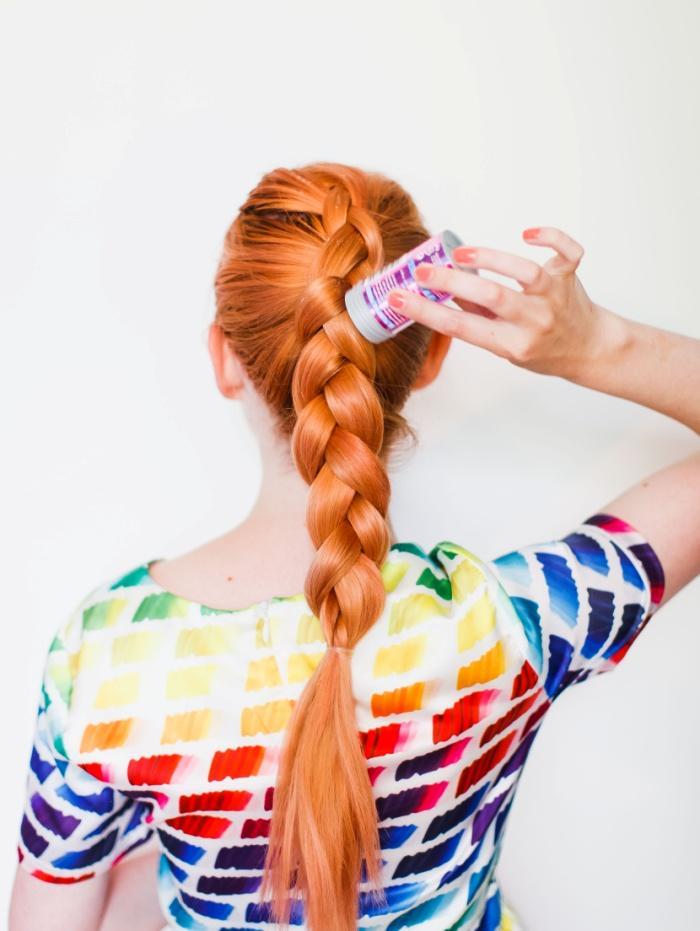
Accessorize Your Braid
Beautify your braid with different hair accessories like pearls, hair jewelry, hair bands, decorative ties, or flowers. It will make your braid look gorgeous and more delicate. It is also an amazing way to make your braid more suitable for formal occasions like weddings, bridal showers, or fashion shoots.
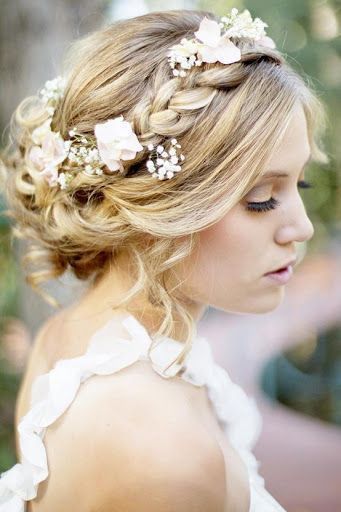
Cover Up Your Scalp For Depth
If you have thin hair and your scalp peeks through after you are done braiding your hair into a trendy Dutch braid then hide the white areas of your scalp with the help of a root touch up powder and fake the appearance of a fuller hairline. If you do not have a root touch up powder or spray at hand, then don’t worry! You can use a pigmented eyeshadow that matches the color of your hair and generously apply it to your roots and scalp to hide your skin. It will instantly make your hairstyle look fuller and more dramatic than before.
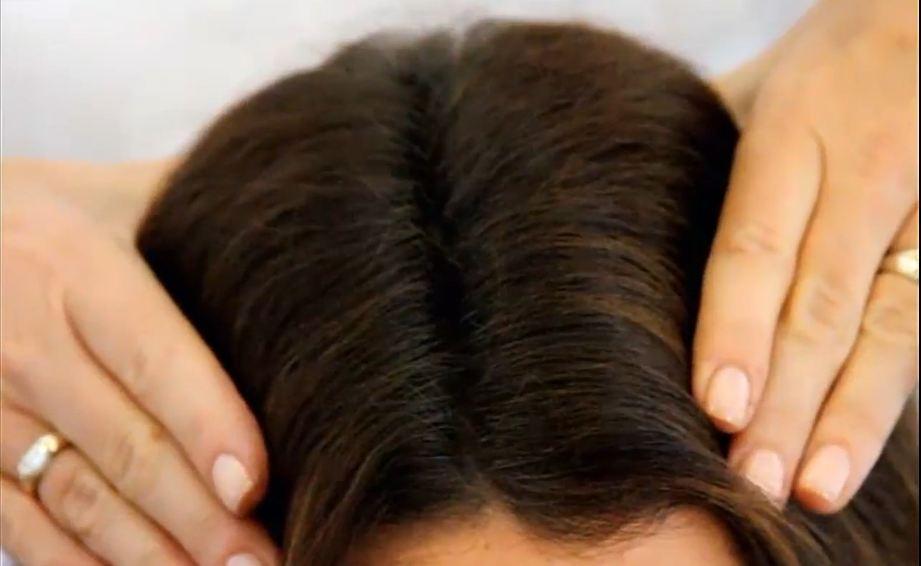
Protect It With Sleeping Cap
After putting so much effort into Dutch braiding your hair, you don’t want it to get ruined while you sleep, right? To protect your braid from flattening and twisting while you are in deep sleep, wear this protective sleep cap before you hit the bed. It will keep your hairstyle safe and your locks frizz-free for a longer period of time.
Use this guide as your mentor and keep practicing until you perfect the Dutch braiding technique. Sooner than you will be able to realize it, you will be wiggling your fingers and working magic on the strands of your, or others hair, making gorgeous braids in no time. Once you master the Dutch braiding technique, you will be incorporating this braid in various other hairstyles as well, we bet! So, sport this trendy braid to work, parties, weddings, or casual get together with your family and make a statement without overdoing it.
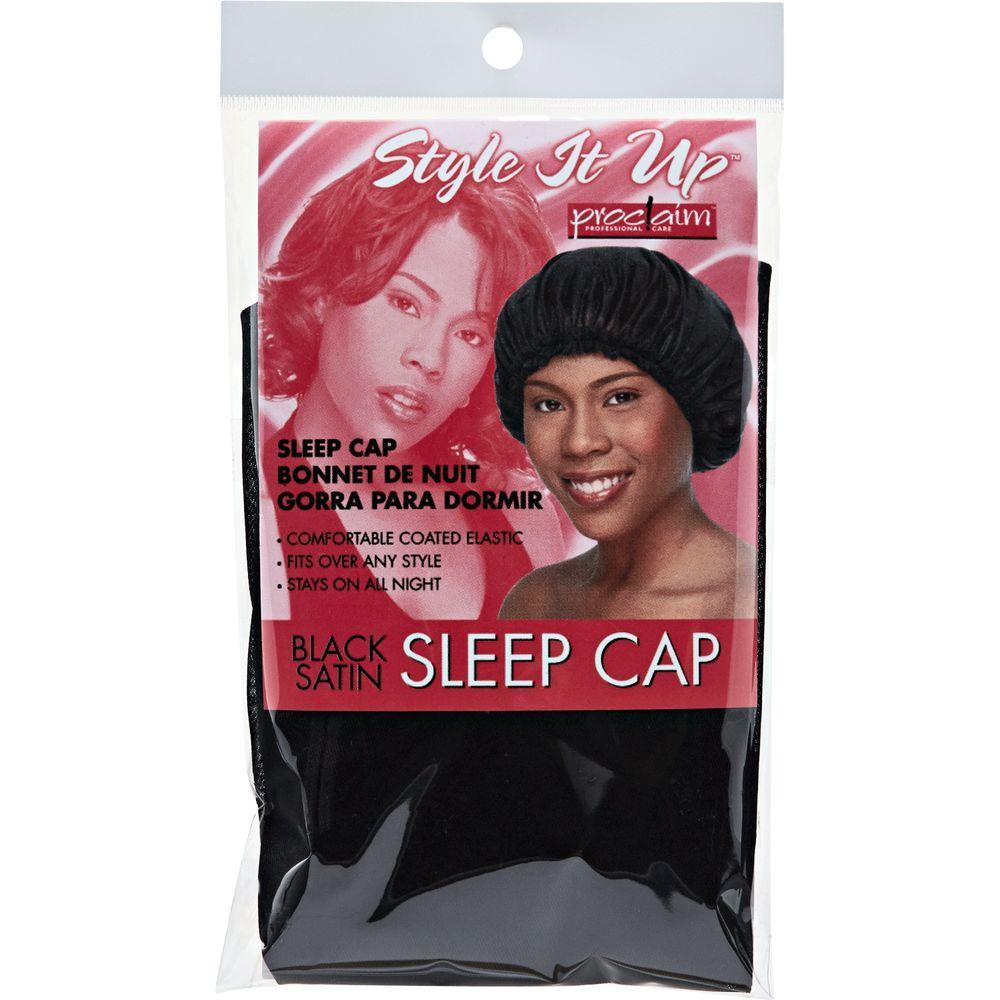
Dutch Braids Modified
Dutch braids are quite versatile and can be further styled into various different ways. Here are six interesting and playful ways to spice up your Dutch braids and rock a different look every day.
#1 Hollywood Boxer Braids
You don’t have to go with the regular style every time you want to braid your hair Dutch style. You can spice the tradition up a little and create multiple variations of it. One of them is the boxer braids, which is a super easy and gorgeous style. Simple part your hair into two sections, Dutch braid them, and voila! You now have boxer braids! This style has been made popular by the Kardashians, Jenners, and Instagram Influencers.
#2 Dutch Braided Space Buns
This is another variation in which you can twist Dutch braids into. Part your hair into two sections and tie them both into separate Dutch braids that are going upwards towards the crown of your head. Then twist both of the braids on the top of your head to make little top knots out of them, gaining yourself a cute and stylish hairstyle. Steal the show with this Instagram worthy hairstyle that you can achieve easily.
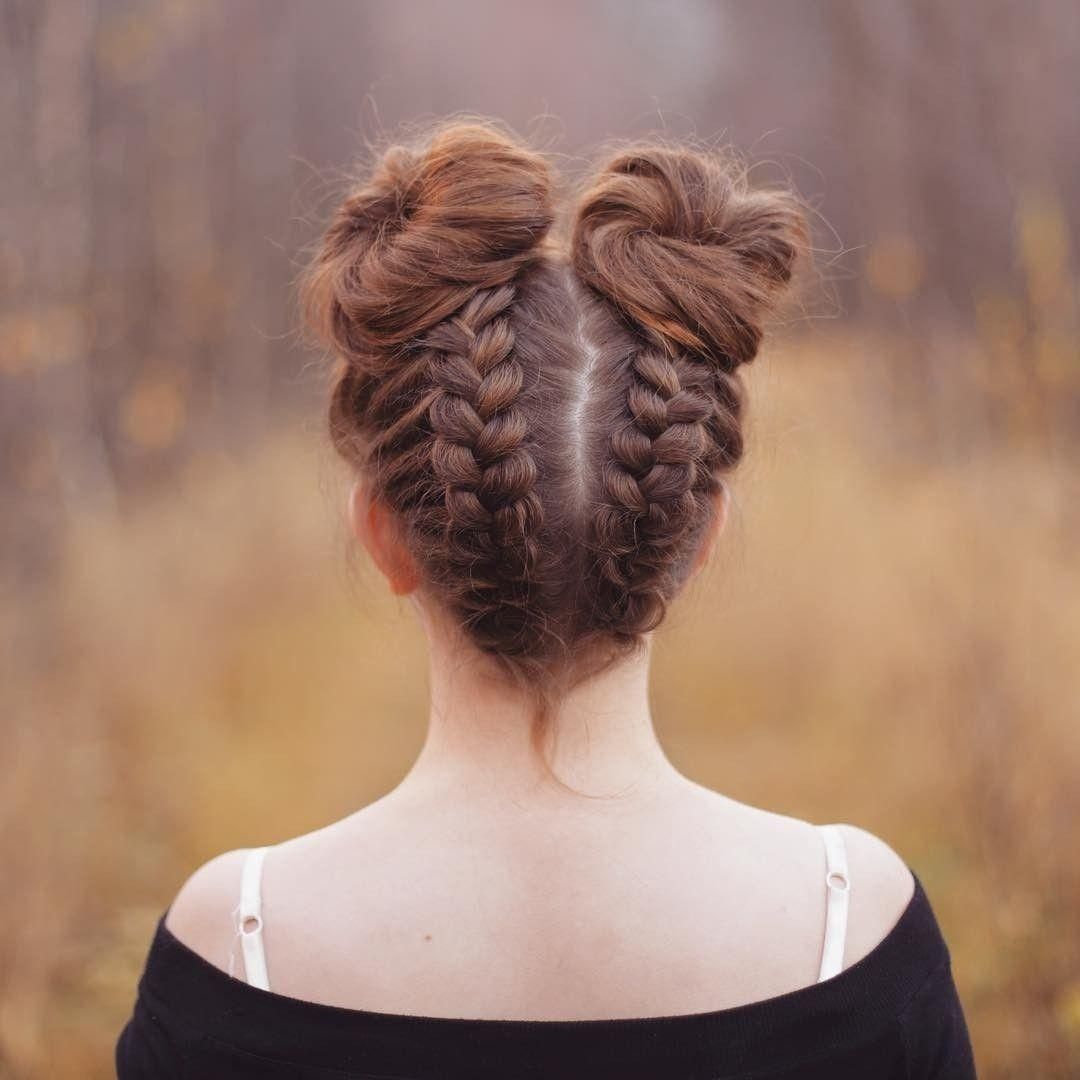
#3 Bangs Into Dutch Braid
If you have run out of ideas on how to style your bangs then Dutch braids are here to the rescue. Comb your bangs backward and tie them into a Dutch braid till it reaches the crown of your head. Secure the end of your hair with a band and gently tug on the sections to make your braid look more voluminous. Set your hair with a hairspray to tame any fly-aways and baby hair on the front to complete the hairstyle.
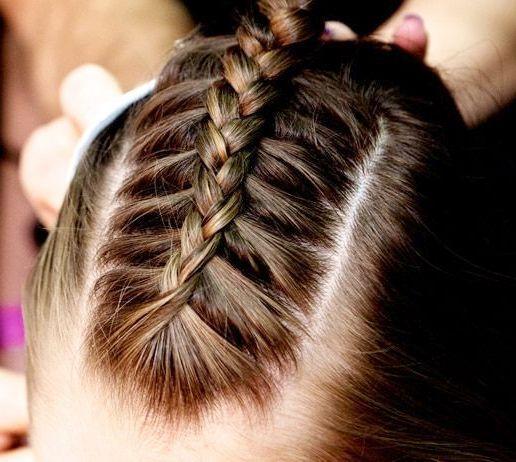
#4 Faux Hawk Braid
This edgy and trendy hairstyle is the best option for you if your personality leans more towards the daring side. A faux hawk braid is ideal for parties, clubbing, and fashion events. Start Dutch braiding your hair right from the hairline and keep braiding it till the nape of your neck. Complete your braid and secure it with a hair tie. Pull out each section of the braid and massage it to add volume. Once the volume reaches the max, set it with hairspray and you are ready to be the showstopper of the night.
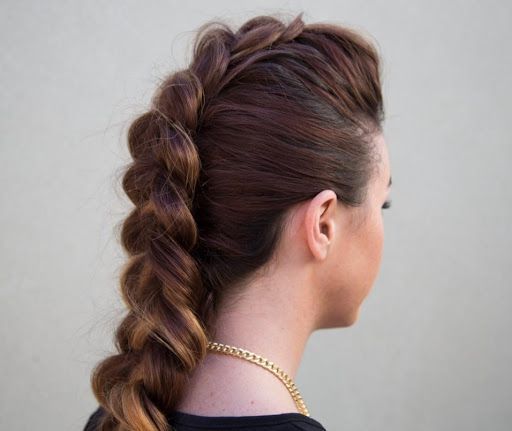
#5 Dutch Braid With Ponytail
Instead of doing the usual Dutch braids that starts from the lower point of your hair, you can change the game a little and pull the hair up where you usually start a ponytail from, and then Dutch braid it so that you can have a stronger version of the hairstyle.
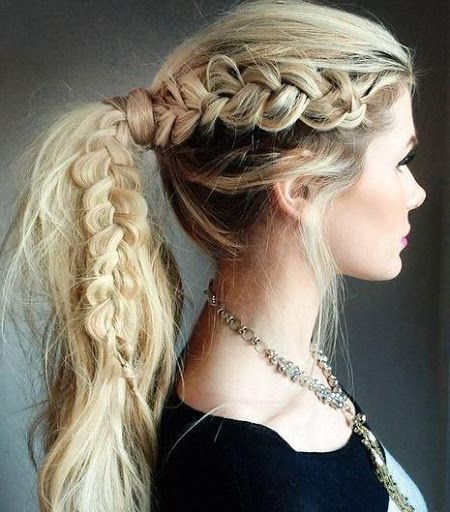
#6 Dutch Braid Crown
Wear your hair like a crown with this simple and easy Dutch braiding technique. Start off by Dutch braiding your hair from your forehead hairline and work its way towards the nape of your neck. Repeat the exact same process on the other side and add some volume to the braid by tugging on each section. Cross both braids over from the side of your neck and pin them above your hair. It will create a beautiful crown-like structure that will make you look no less than a boho queen in an instant.
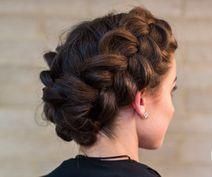
Pro Tip
If you have thin hair and your scalp peeks through after you are done braiding your hair into a trendy Dutch braid then hide the white areas of your scalp with the help of a root touch up powder and fake the appearance of a fuller hairline.
If you do not have a root touch up powder or spray at hand, then don’t worry! You can use a pigmented eyeshadow that matches the color of your hair and generously apply it to your roots and scalp to hide your skin. It will instantly make your hairstyle look fuller and more dramatic than before.
Use this guide as your mentor and keep practicing until you perfect the Dutch braiding technique. Sooner than you will be able to realize it, you will be wiggling your fingers and working magic on the strands of your, or others hair, making gorgeous braids in no time. Once you master the Dutch braiding technique, you will be incorporating this braid in various other hairstyles as well, we bet! So, sport this trendy braid to work, parties, weddings, or casual get together with your family and make a statement without overdoing it.
Dutch Braid Hair Styles
If you’re a fan of doing different types of braids in your hair, then you have arrived just at the right place. Seeing your favorite celebrities rocking hairstyles tied up in French or Dutch braids makes you really want to try them out on yourselves.
If you are able to master the art of knowing how exactly you’re supposed to work with multiple hair strands at once, then doing a dutch braid won’t be much of an issue.
Even if you’re a beginner with this, just know that french braid is all about crossing the hair over whereas dutch braid is all about crossing under. You’ll understand better once you start reading ahead along with step by step guidance with pictures.
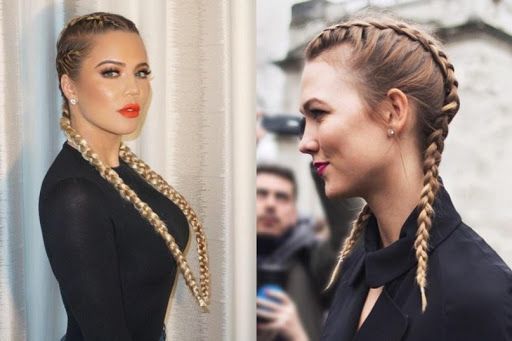
In this section, we’re going to talk about different types of dutch braids and how easily you can try them on you or your friend’s hair. It might seem difficult to learn the technique at first, but it’ll start getting easier as you practice along with reading and watching the steps.
- Double Dutch Braid (Aka Pigtails)
This super neat dutch braid might seem tricky to make, but it’s actually very simple. All you have to do is part your hair from the middle into two sections.
Tie one side so that you can easily work with one side of the hair without the hindrance of the other. Take the topmost hair strands and divide them into three sections like you normally do in a regular braid.
Take one strand and pull it under the middle strand and do the same with the third strand and pull it under. As you go further, keep on adding smaller sections into the main strand as shown in the picture below until you reach the end of the hair.
Repeat the same procedure on the other side and there you have it, a nice double dutch braid!
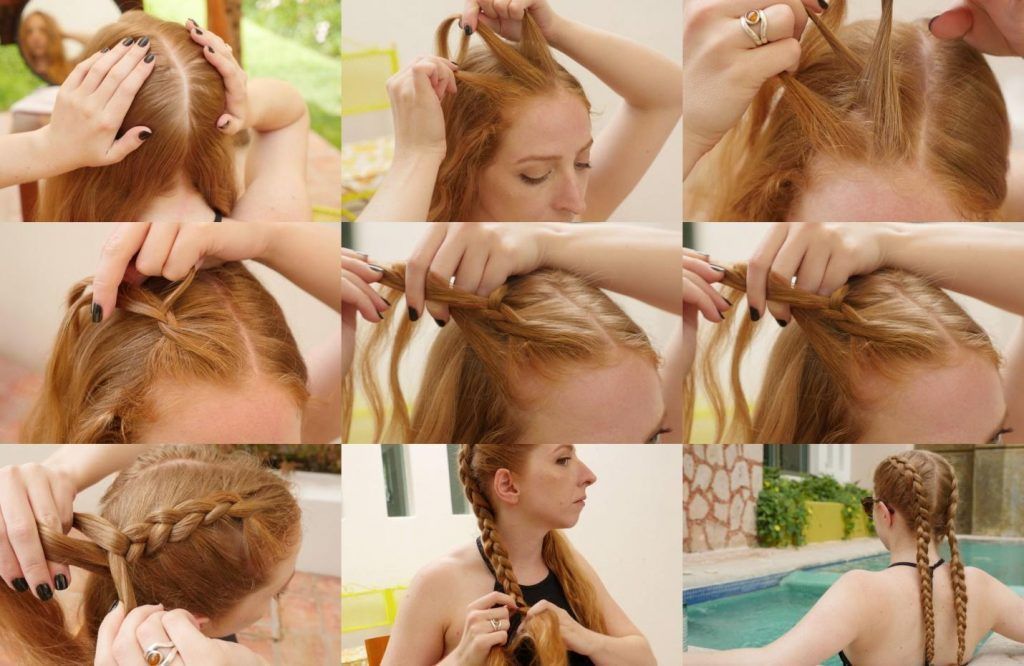
- Dutch Braid Crown
This elegant looking braid is super fun to make. It’s all about wrapping the hair while making a dutch braid. To start off, divide the hair into two sections.
Take a section from the bottom of the hair behind and start braiding the hair. As you move along towards the front top, keep on adding hair strands until you reach the very end of the hair.
Tie with an elastic band and wrap the rest of the hair on the head and tuck it inside the braid. Add some pins to secure the hair firmly and there you have it, a nice dutch braid crown.
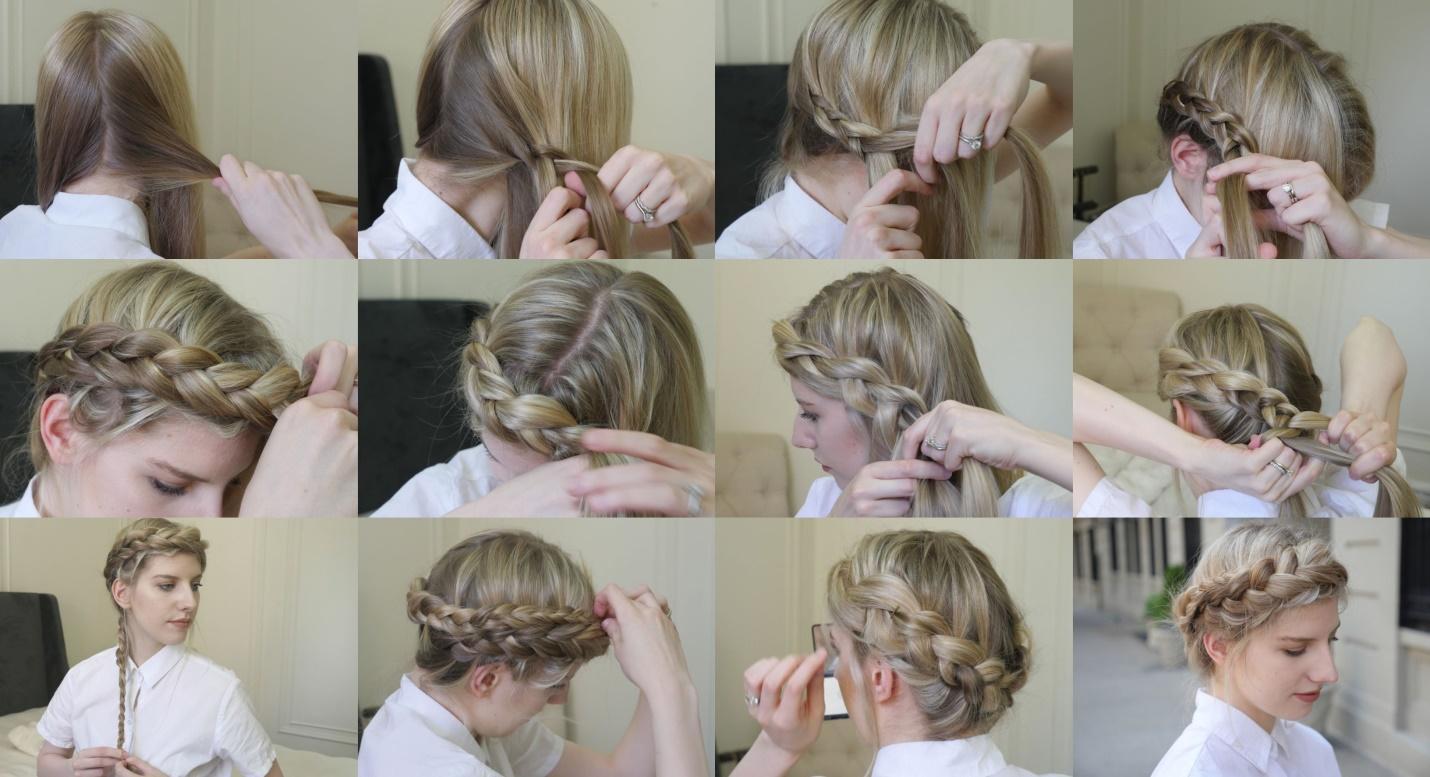
- Dutch Fishtail Braid
This is one of the most versatile styles that anyone can easily rock. It’s super stylish and also trending these days. All you have to do is part your hair all on one side that you prefer. Take the top section of hair and divide them into two sections.
Take a small section of hair from the right and pull it under to the left portion and a small section from the left and pull it under the right portion.
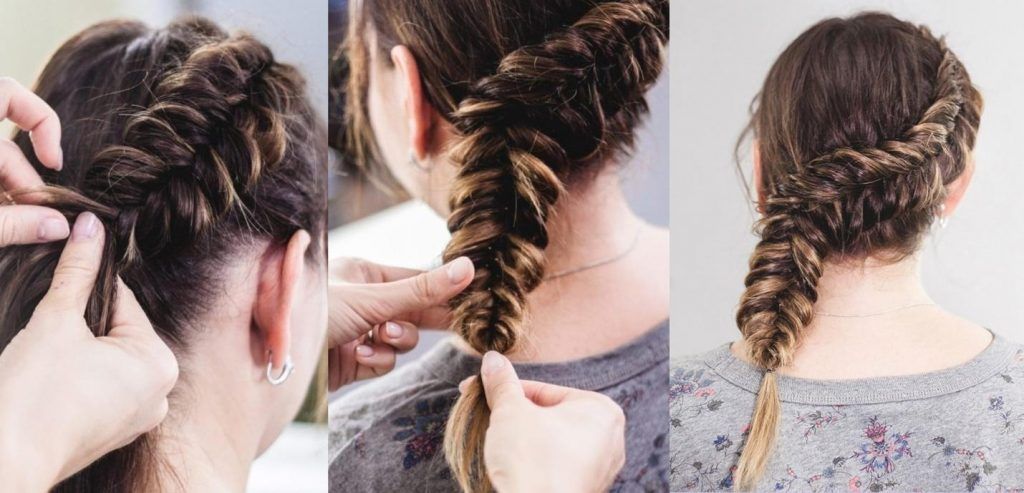
As you go down, keep on adding hair from both the sides until you reach the end and there you have a nice dutch fishtail braid.
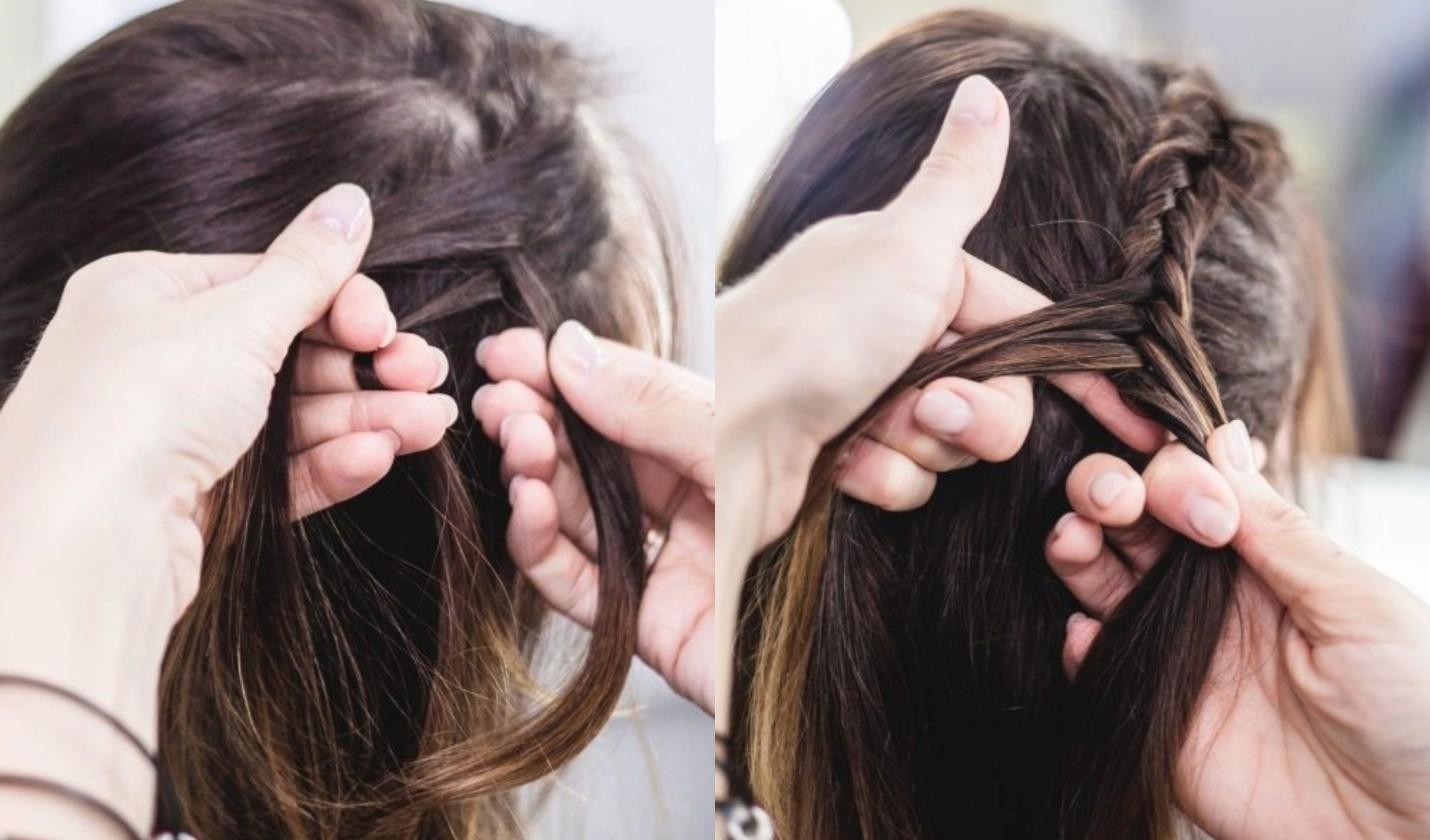
- Side Dutch Braid
Side dutch braids can perfectly go with a medium to longer length hair. This is just like a regular braid and can either be done outwards or inwards/reversed plated style. All you have to do is part all your hair on one side.
Take the top right or left section of the hair and part it into 3 sections. Pull the 1st section under or over the middle section and then pull the 3rd section under the middle section and then carry on with the rest of the hair adding sections to the braid until the end is reached.
Pull the braid a little to make the braid look thicker.
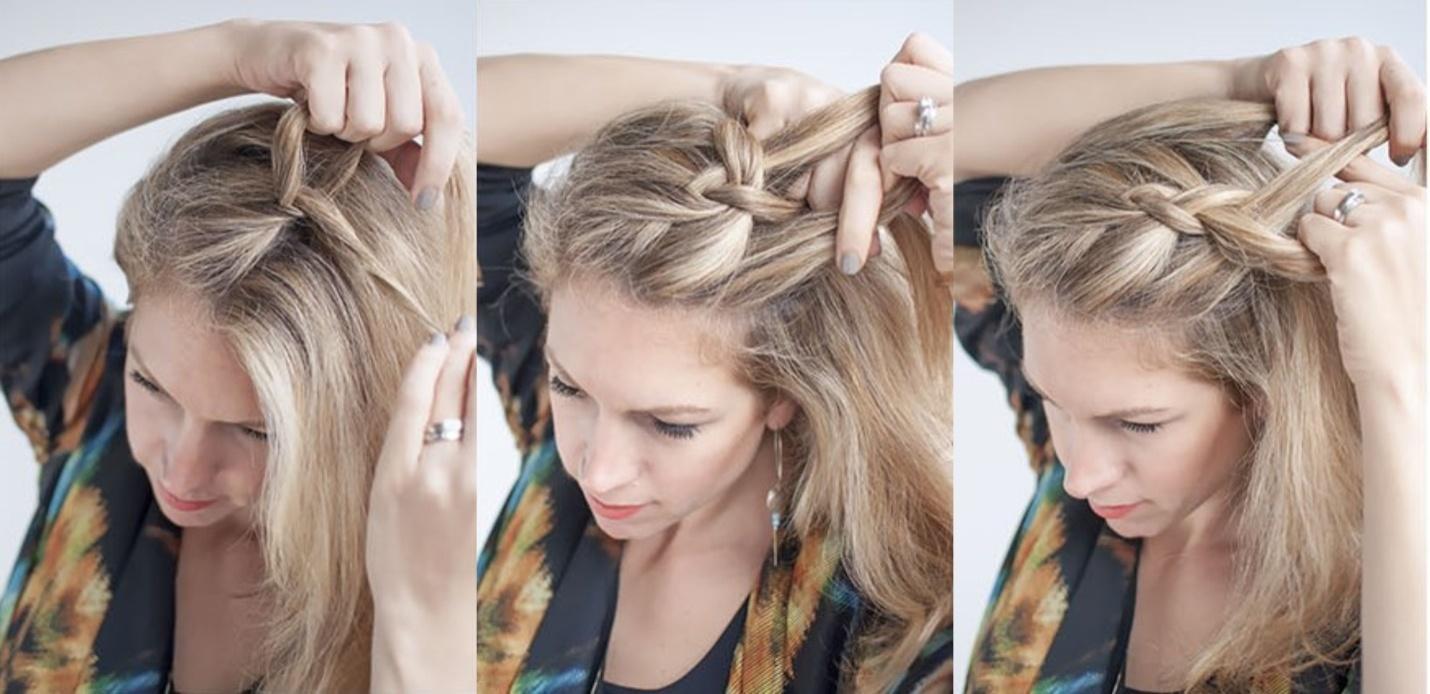
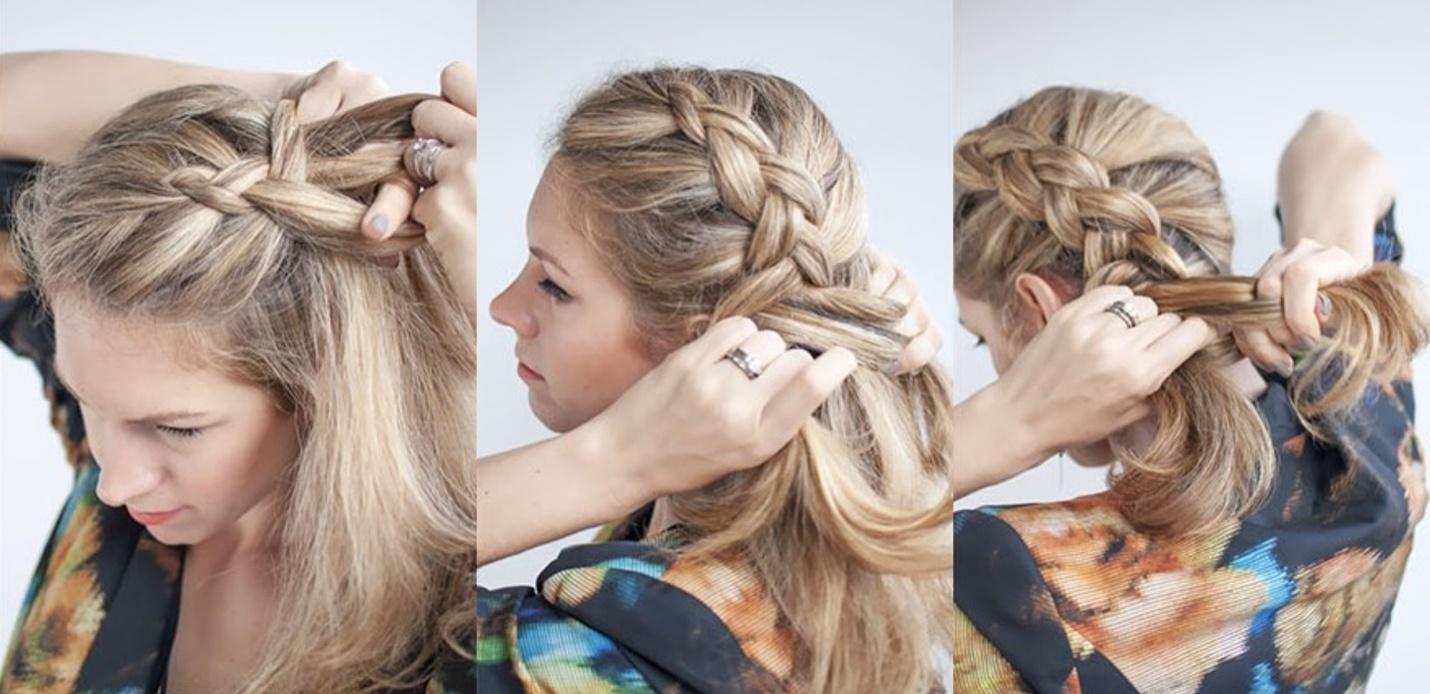
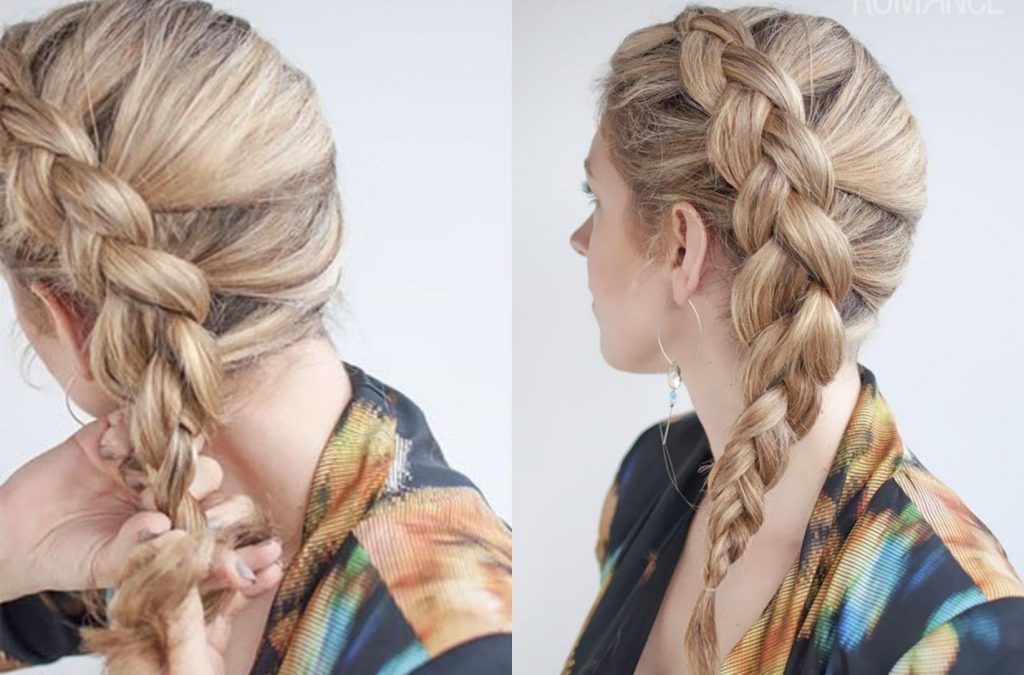
- Dutch Braid (Into) Bun/ Upside Down Dutch Braid Into Bun
This hairstyle can be perfect for any formal event. Be it a wedding ceremony or even prom night, it will bring just the right touch to your look for the event. It is quite simple to make, all it requires is some extra energy in your arms to pull a braid towards the top of your head and then tie it into a bun.
The first thing to do is to comb your hair, then bend your hair downwards so that your hair falls in front of your face, then start braiding your hair into three strands style.
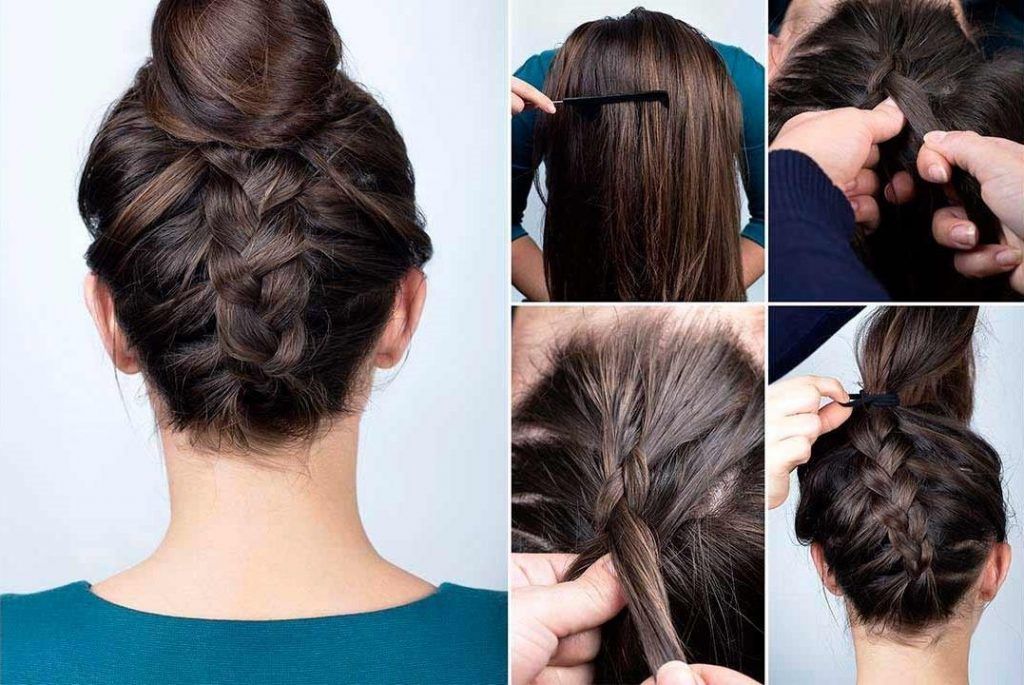
Once you reach the top, then tie the rest of the hair with a ponytail and then start twisting the remaining hair into a bun style. Once its done, add some pins to secure the style in place and pull the braid and bun out to make it look thicker.
- Backward Braids/Reversed Braids
The most basic style in dutch braids that can be done in just about 5 minutes. It’s literally the opposite of the French braid. All you have to do is section your hair into 3 portions.
Start pulling the strands from the right and left under the middle section and keep on adding hair till you reach the very end. To give it more volume, pull the sections in the braid so that they appear thicker.
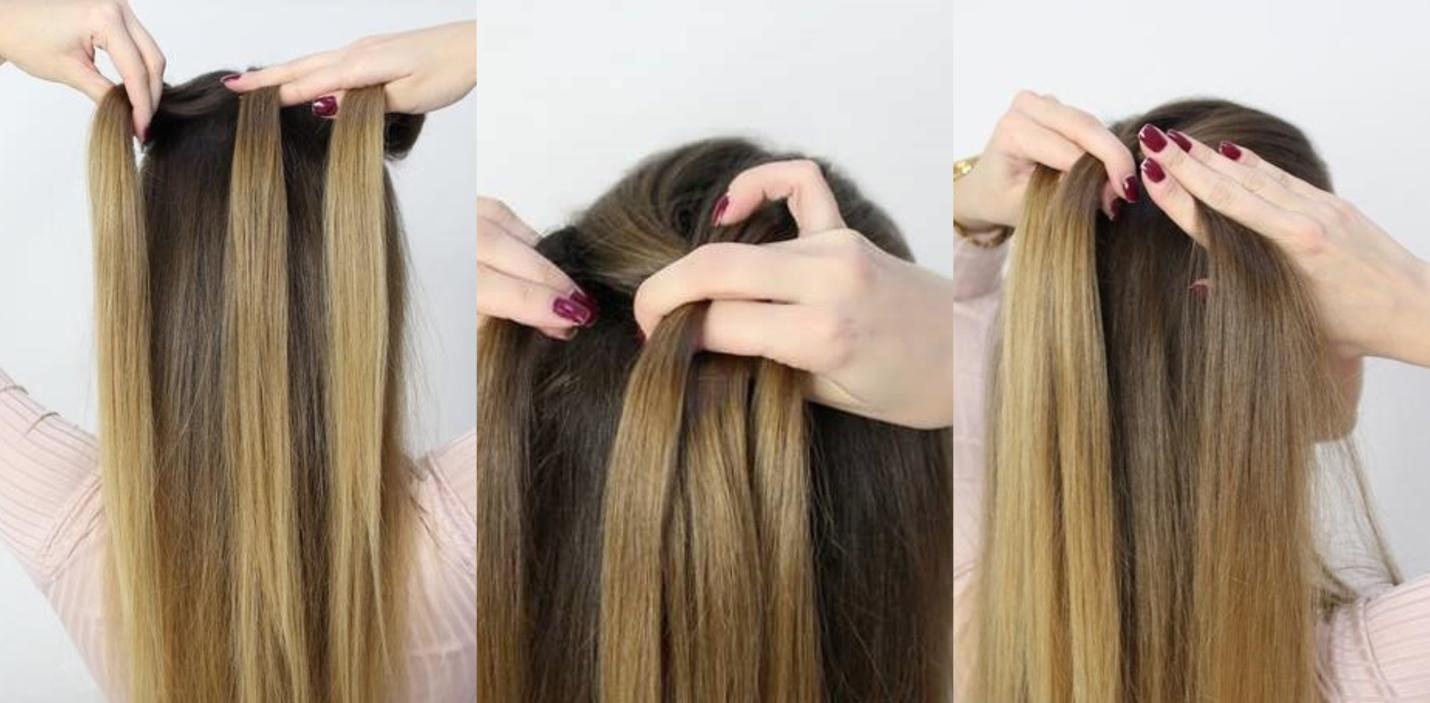
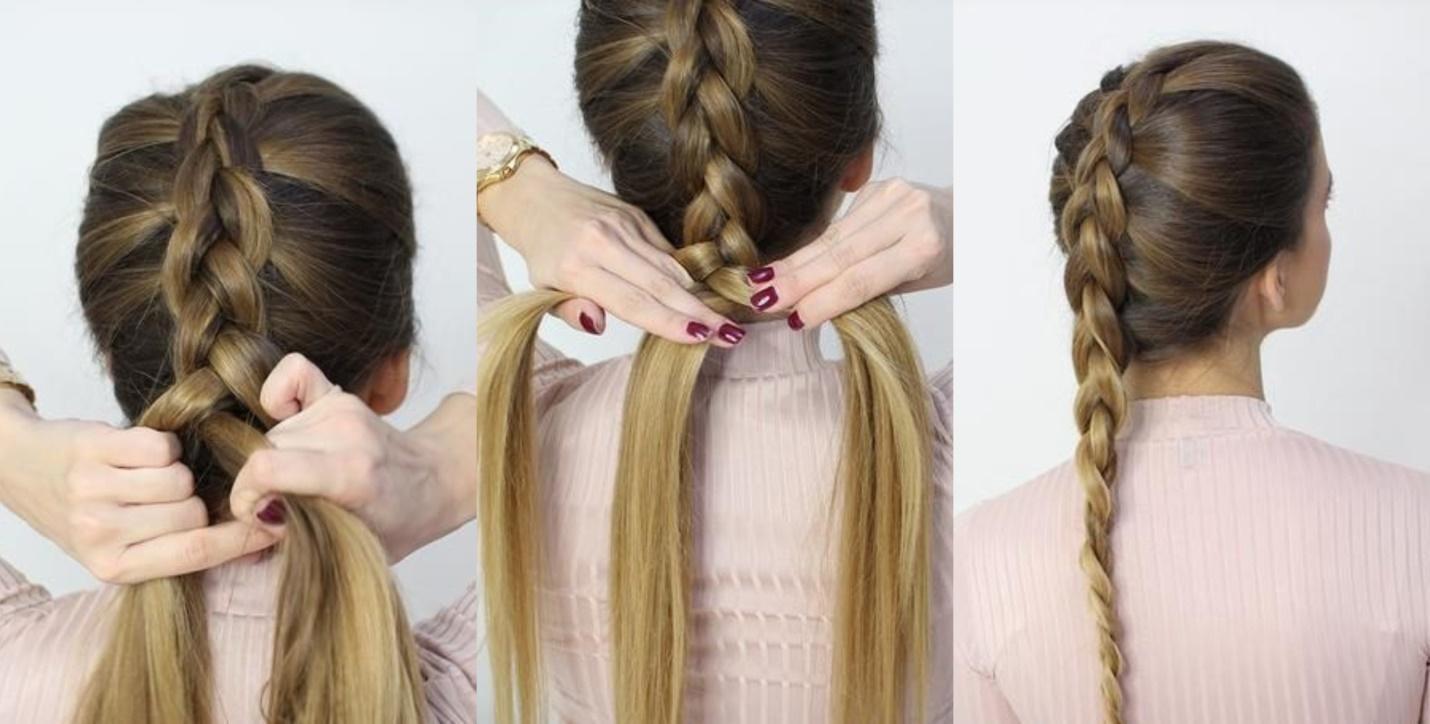
- Dutch Braid Updo
This style is so elegant and effortless that it can go with any of your everyday looks. It super easy to make. First, separate the front section from the side of your face and start with the section that is behind the front section. Begin with a regular braid and keep on braiding until you reach the back of your head and then pin it.
Take the rest of the hair from the front side and twist it to the back and take the hair from below and roll it up into a bun right under the braid that you just made.
Secure the style in place with some bobby pins and take some layers out in front of the face to give it a final touch.
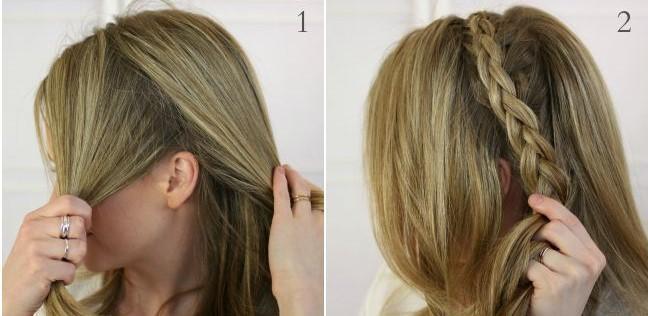
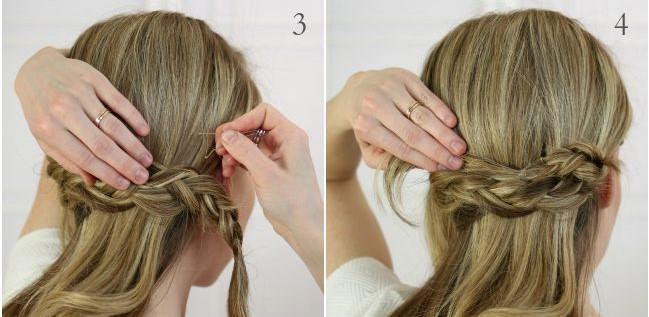
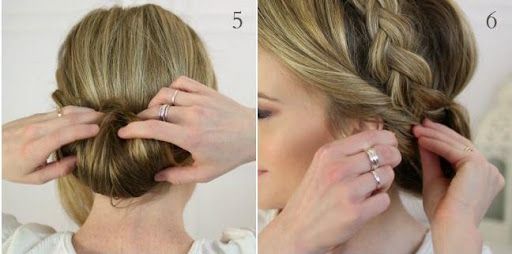
- Twist Braid (Aka Rope Braid)
This is a very unique style of the braid which became popular due to its rope-like appearance. It is just like a regular dutch braid, just that it is divided into 2 sections instead of 3.
All you have to do is divide the hair into two sections start by adding hair from both the sides into the main section by pulling it underneath the hair.
Make sure that you tighten the braid as you come downwards and then secure it with a ponytail.
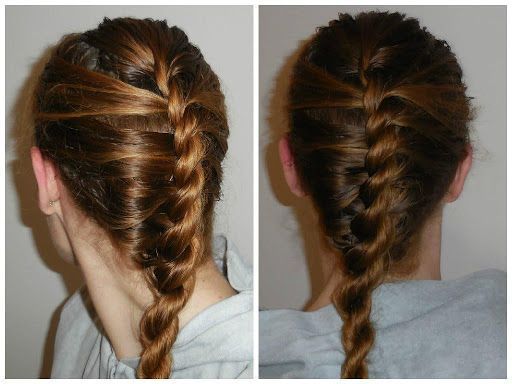
- Ponytail Braid/Side Dutch Braid Ponytail
Having a 2 in 1 combination of hairstyle can be super fun to make and looks extremely gorgeous on medium to long hair. This hairstyle is not just any regular ponytail, but it is a side-swept dutch braid with a side ponytail. For this hairstyle, all you need to do is start from one side you prefer and section the hair into 3 portions and start with a reversed braid.
Keep on adding smaller sections until you reach the other side of the hair.
Once you have it, then take the other rest of the hair on the opposite side and gently wrap it around the braid that you brought from the other side and secure it with an elastic band. Give it a final touch by pulling the hair out a little for a puffy look.
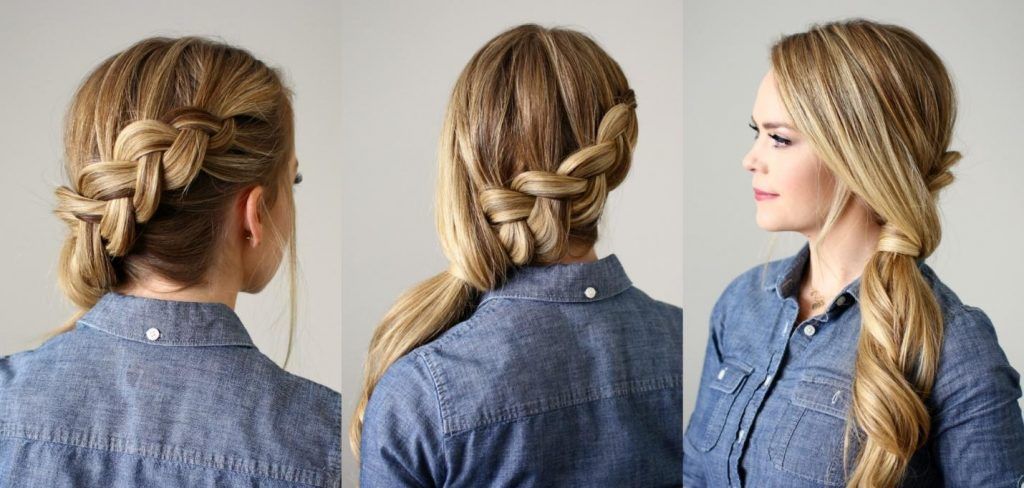
- Loose Dutch Braid
For this look, you might need to add in some hair-extensions to create a bigger voluminous look. It is a regular dutch braid with loose ends.
All you have to do is start making a dutch braid and once you complete it, secure it with a hairband and then pull out hair from every strand to increase the volume.
Don’t pull too hard otherwise you’ll end up ruining the braid. Add some hairspray to set the hair in place and some pins to secure the hair in place.
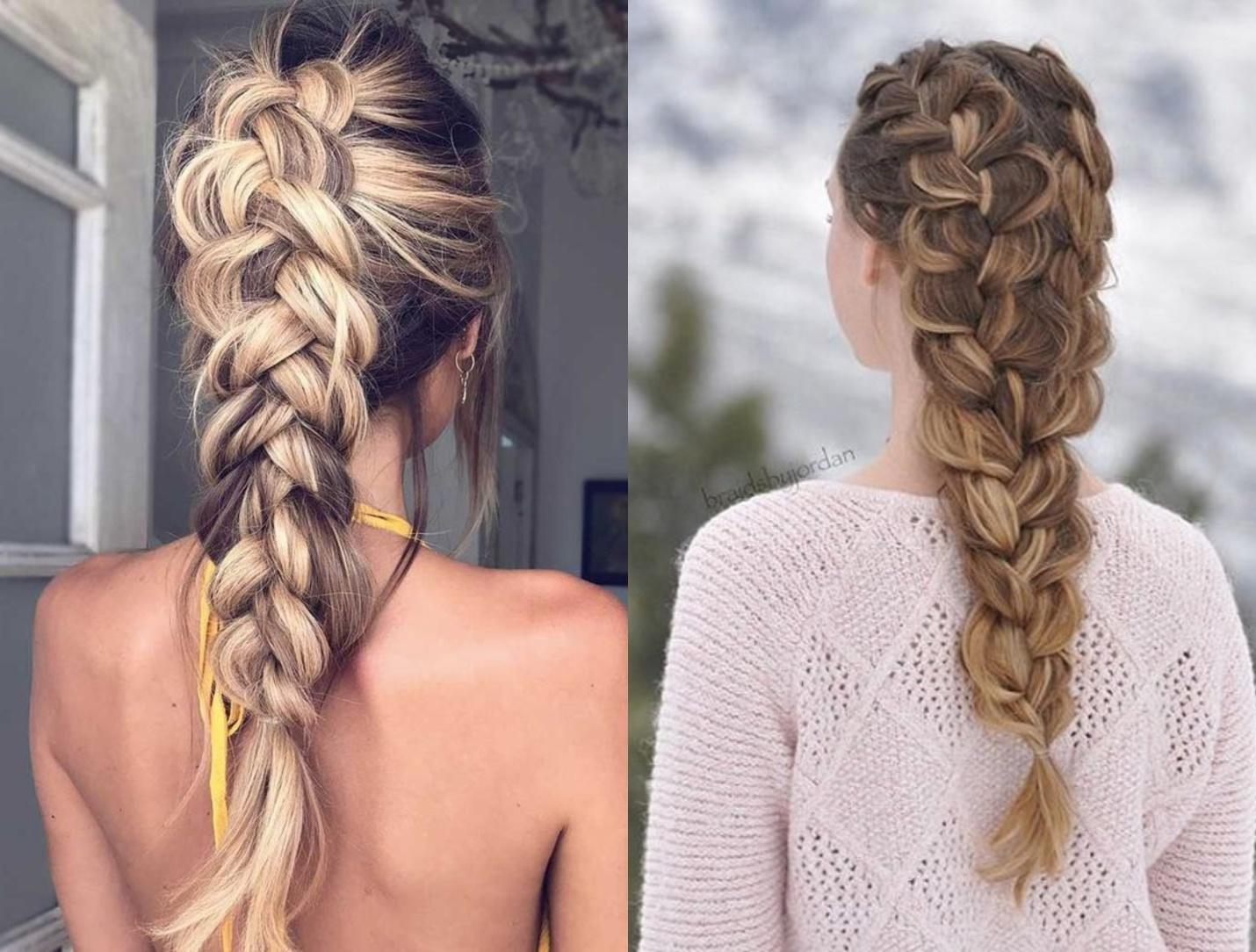
- Braid Waves
Having the post braided hair waves the next morning is the best feeling in the world. You wake up and voila! Your hair is already made to go for the rest of the day. If you’re hitting the beach, then this will be perfect to style for the outing.
All you have to do is once you wash your hair, tie them up in a nice reversed braid and leave it on overnight. Once you wake up in the morning, untie the braid and there you have it.
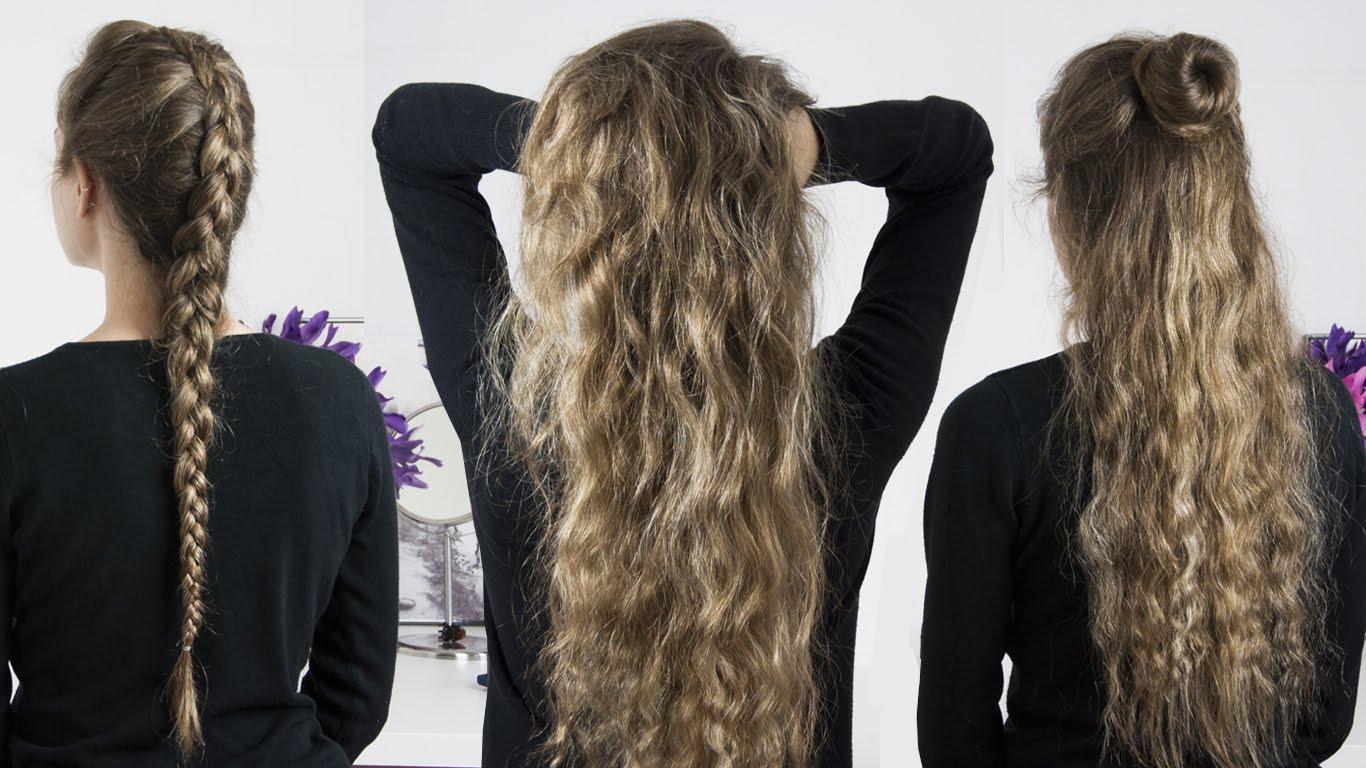
- Messy Dutch Braid
Having a neatly done dutch braid can get boring at times, so to add some more definition to the look, try messing up your braid a little to create an edgy look.
It can be done with any Dutch braid hairstyle, be it a single, double or even a dutch braid ponytail.
Once you have made the dutch braid in your hair, gently pull the braid apart to create the mess you want with the look.
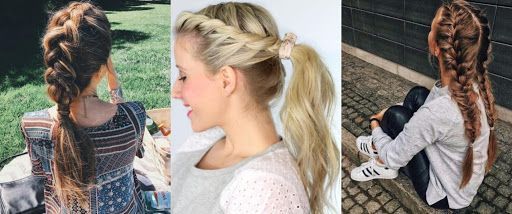
- Twin Braids – Also Known As Double Braid
This super trendy look made every girl in town go gaga after this style.
Just like you would make a single dutch braid, by sectioning your hair into two sides and then making a dutch braid on each side would help you just right in accomplishing this look.
By now, you must’ve tried out the dutch braid style and can now easily achieve this look too.
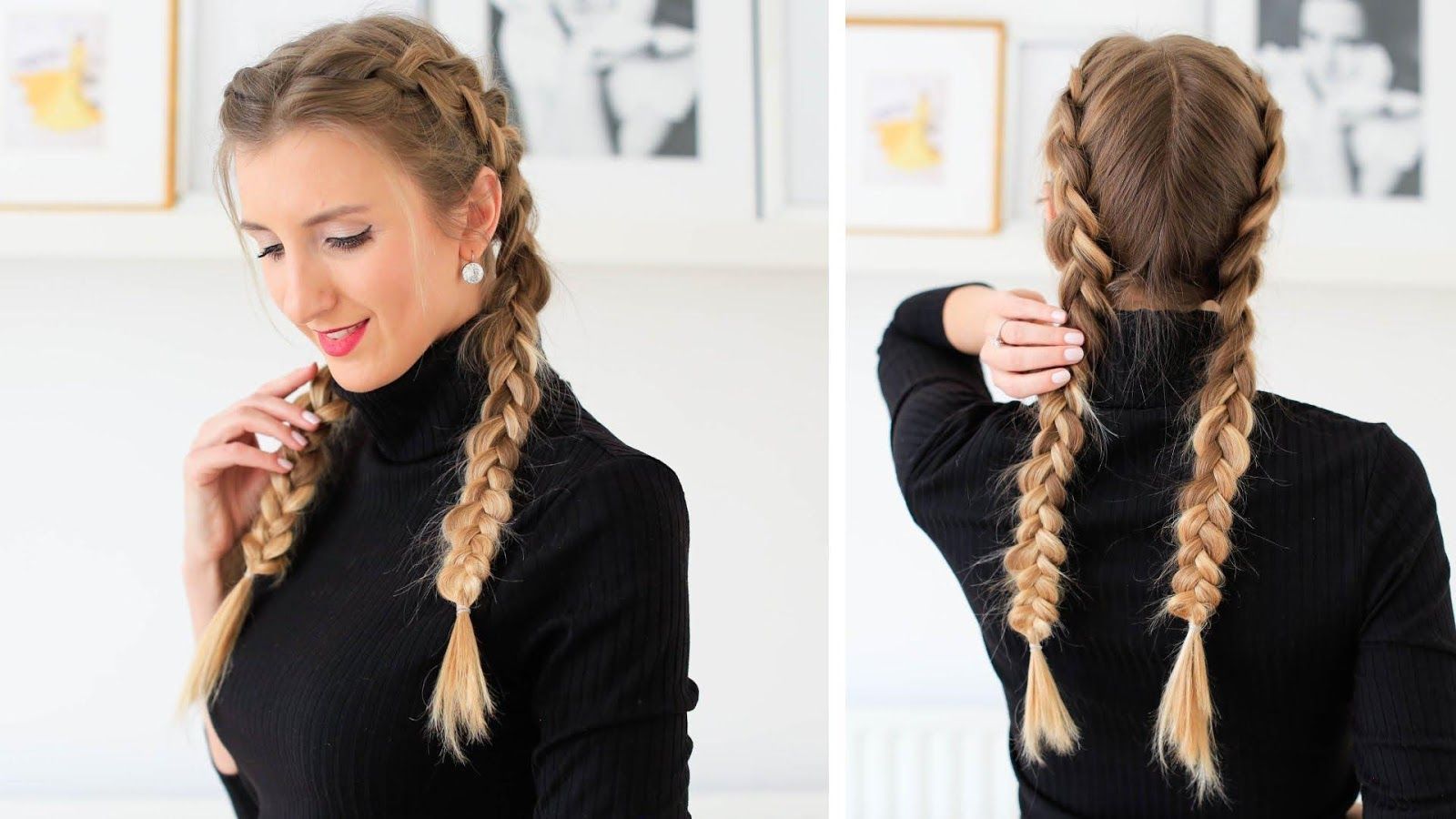
- Half Dutch Braid
Now, this hairstyle has a whole lot of variety to style it in. It can be made in the form of a ponytail, an updo or even a side-swept low bun style.
This can be called a 2 in 1 combo as it has a dutch braid as well as a bun or open hair.
All you have to do is just make a dutch braid halfway through the hair and then tie it up and either make a low- bun, an updo or plainly just leave the hair open.
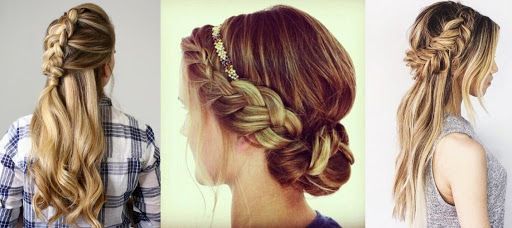
- Triple Or 4 To 5 Dutch Braid
This is the most challenging one to make, but with frequent practice, anyone can master this look within just minutes. For this look, one needs to part their hair into 5 sections holding each between every finger. Here’s the tricky part where you have to cross-over each strand. Number all your strands from 1-5, one being the most left one and 5 being the most right one.
Put strand 1 over strand 2 and under strand 3, then put strand 5 over strand 4 and under strand 1, next, put strand 2 over strand 3 and under strand 5, and then finally put strand 4 over strand 1 and under strand 2.
Keep on continuing this pattern until the end and then secure it with an elastic band.
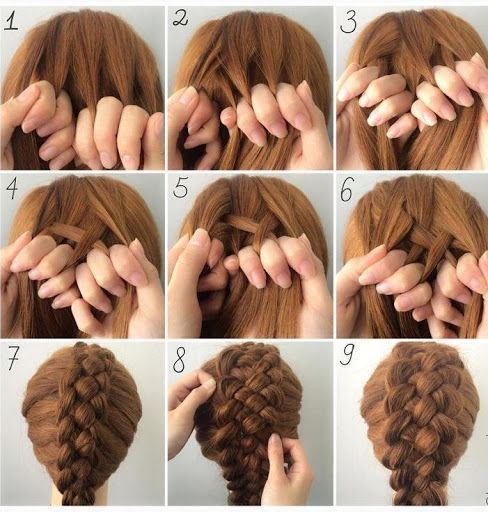
- Knot It Up
This is for girls who love going for loud and bolder looks. It can be done with a single dutch braid or a double dutch braid along with a bun on top. The braid starts right from the beginning of the scalp.
This style may require smaller hair strands to create thinner braids and to add more volume, they can be pulled out gently to create a thicker braid.
Once you’ve reached the crown of your head, tie the braid with an elastic band and take a few hairs from the back and tie in into a knot style bun.
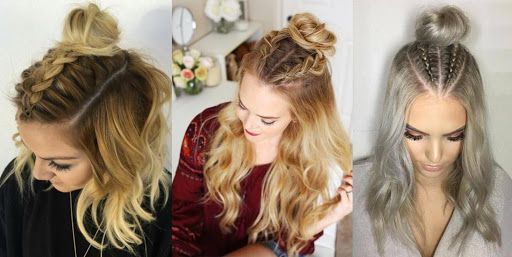
- Dutch Flower Braid
This hairstyle is all about how you move the braid along the head and twist it up into a flower-like a shape. As difficult as it may seem, it is actually quite simple, just requires the right movements to create a nice braided swirl. Spray some water in hair so that hair texture becomes tightly gripped to work with.
Start making dutch braid at the top right of the head and work your way along to the left side of the head and continue the braid till the end of the hair.
Once this is done, twist the remaining braid into a flower style on the head and secure it with lots of pins.
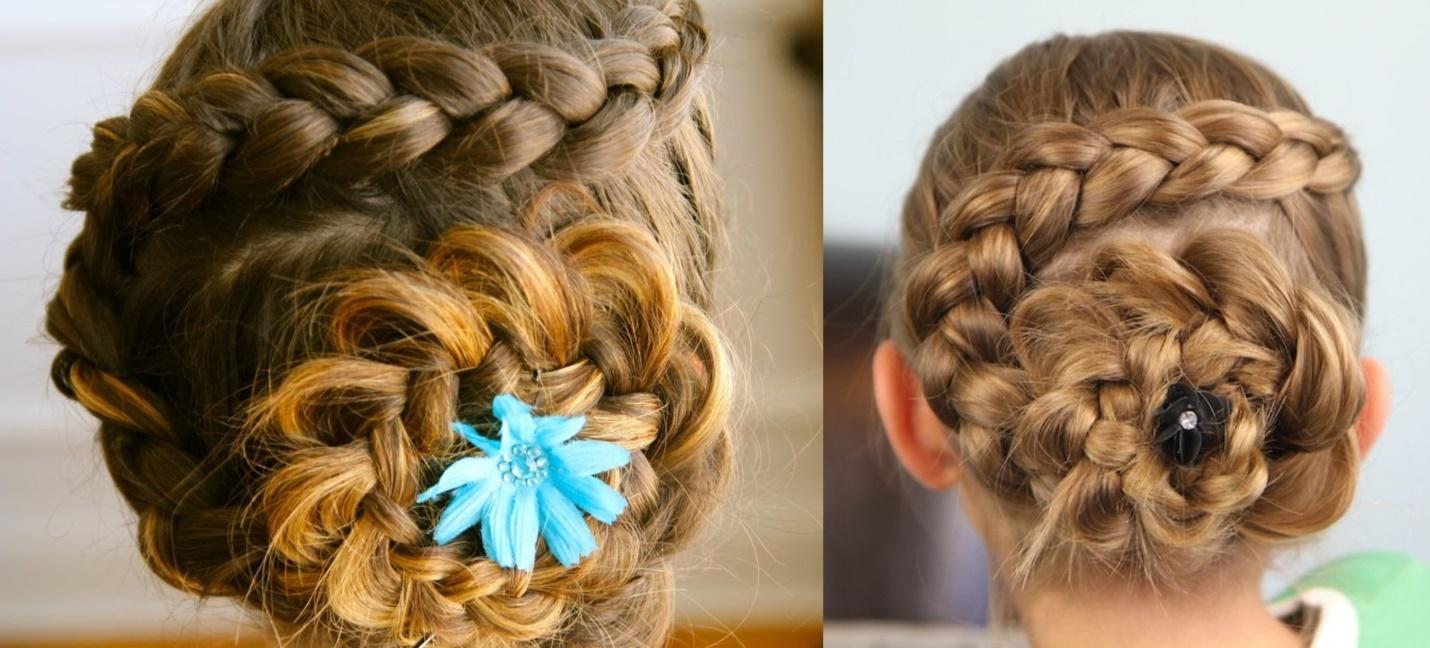
- Mohawk/ FauxDutch Braid
The most stylish dutch braid of all, with an epic touch of a mohawk. For this look, all you need to do this either create a puff at the very beginning on the top part of your head or just start making the dutch braid and then pull out the strands to create a puffy look.
The end can either be left in a ponytail, or it could be neatly tucked under the nape of your neck to add some class.
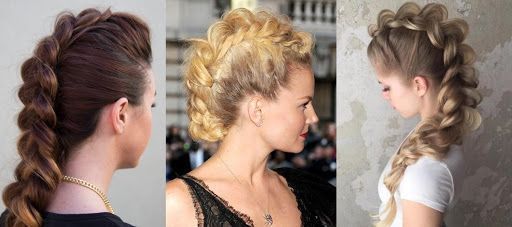
So, with all the above in-depth guidance given, try out this amazing dutch braid hairstyles with a whole lot of ways to style it in. From simple dutch braids to double dutch braids with multiple strands along with a twist of various updos, upside down buns, ponytails and a unique touch of Mohawk and faux styles.
There is no such dutch style that we have left undiscussed in our guidance to this amazing look. For more better understanding, check out the following video tutorials for an easier step by step guidance.
How to do a Dutch braid? (Step By Step Guide)
If you struggle with doing a Dutch braid on yourself, or your daughter, here’s an in-depth guide that makes it pretty simple:
- It’s best to start with damp hair as the braid is most likely to hold in this type of hair, so make sure your hair is damp.
- You can apply a mouse or textured spray to give your hair more density and to make sure the braid holds up well.
- Take a small portion of hair from the top of your head and divide it into three sections – left, middle, and right.
- Take and the left portion and cross it under the middle portion.
- Now, take the right portion and cross it under the middle portion (the new middle portion – originally the left portion).
- Add some hair from the right side of your head to the right portion. Then, cross the right portion under the middle portion.
- Add some hair from the left side of your head to the left portion. Then, cross the left portion under the middle portion.
- And that’s it! Just keep repeating the last two steps until your braid reaches your desired length and you’re done.
The different kinds of Dutch braids
The kind of Dutch braid that will best look best on you depends on many different things such as your face shape, hair length, and of course the occasion you’re getting ready for.
Some frame your face while others wrap around your head. Some look better with bangs and fringes while others don’t.
There is a lot of variety and thus a lot of choices so it’s easy to get confused when deciding what braid, you should do.
We’ve compiled a list of the trendiest types of Dutch braids to make the choice easier for you.
Dutch Halo Braid
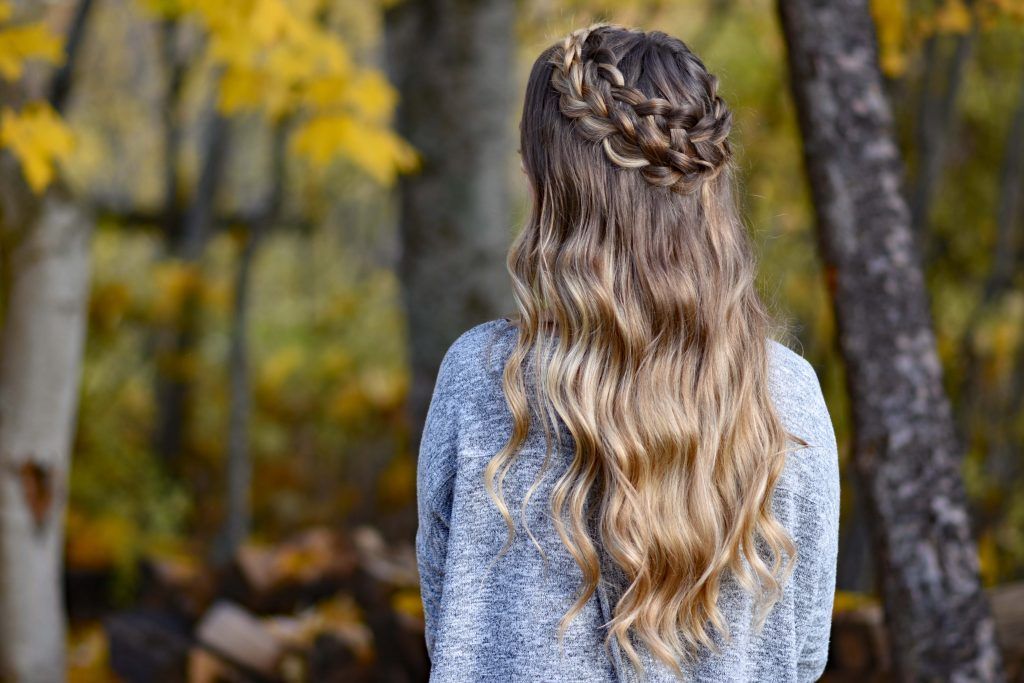
Dutch Braid High Bun
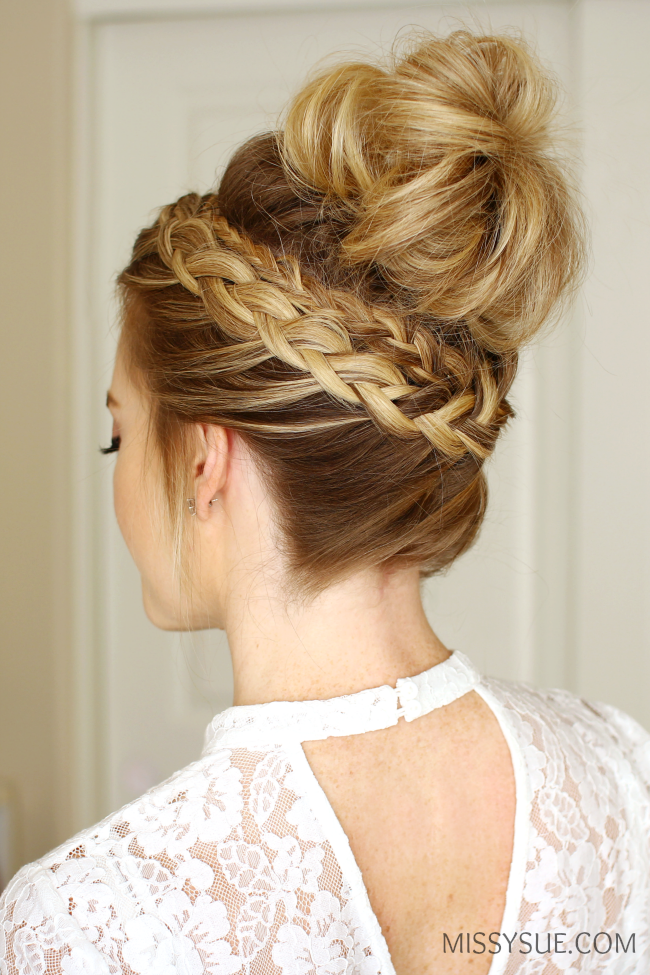
Double Dutch Low Bun
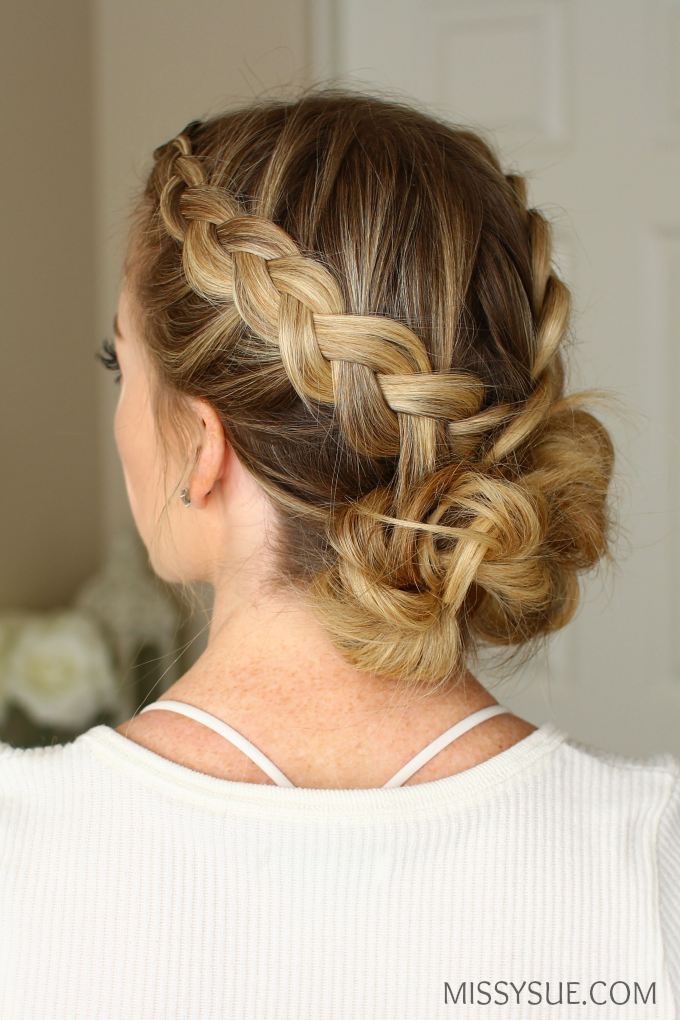
Double Dutch Braids
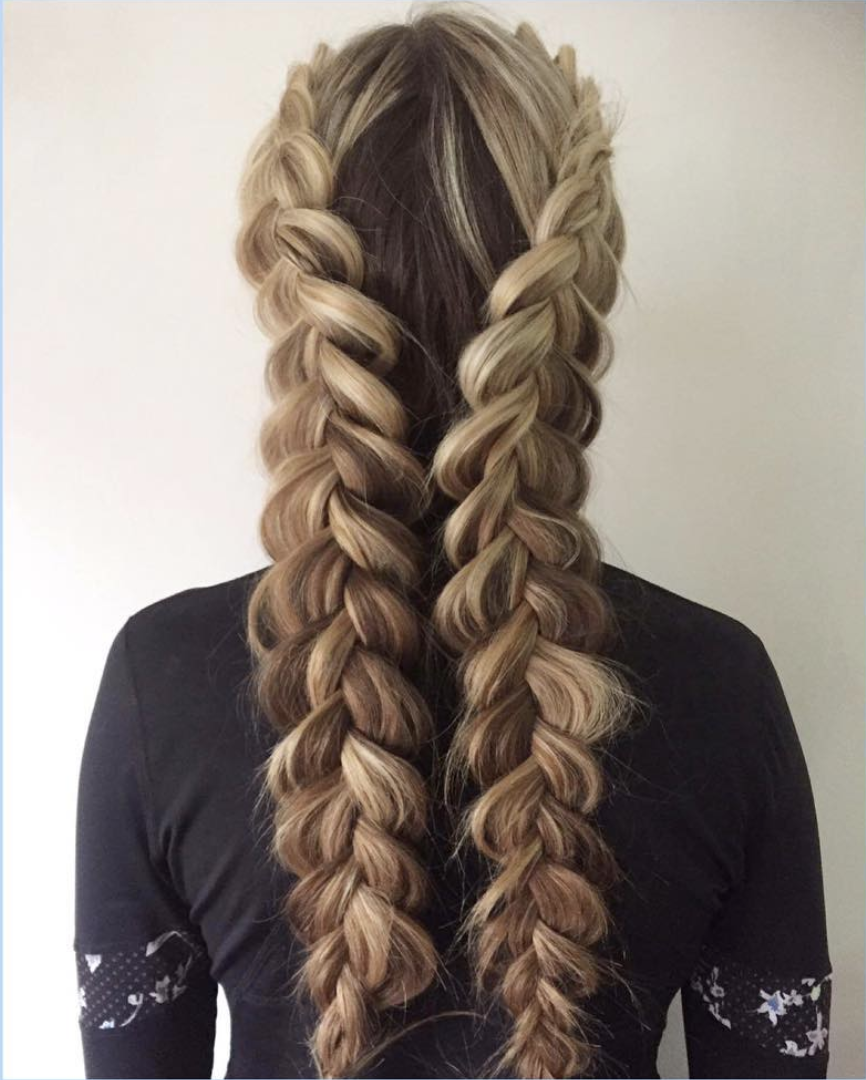
Dutch Braid Updo
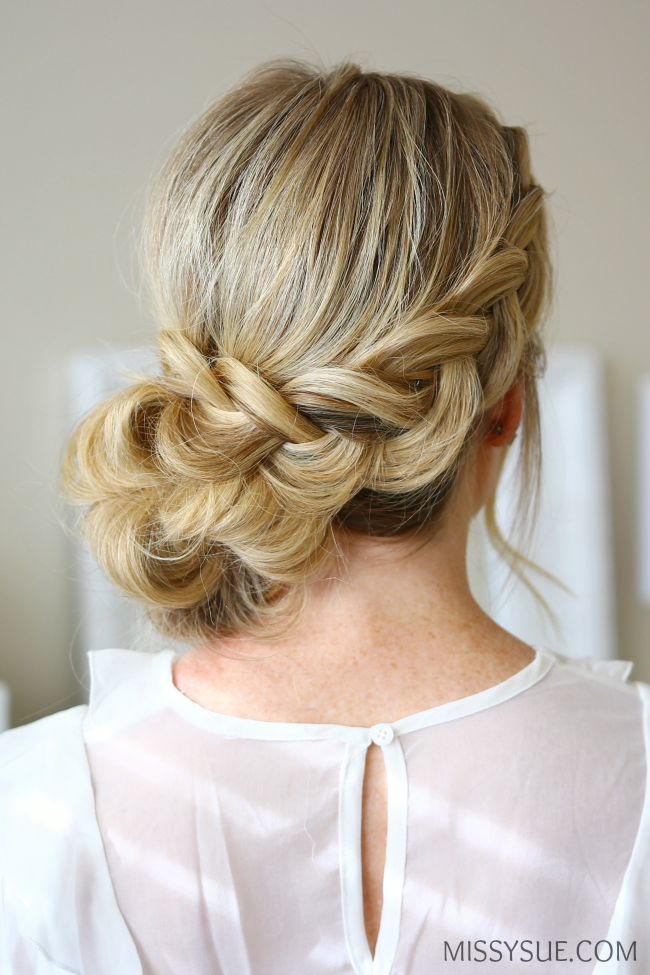
Braid Double High Bun
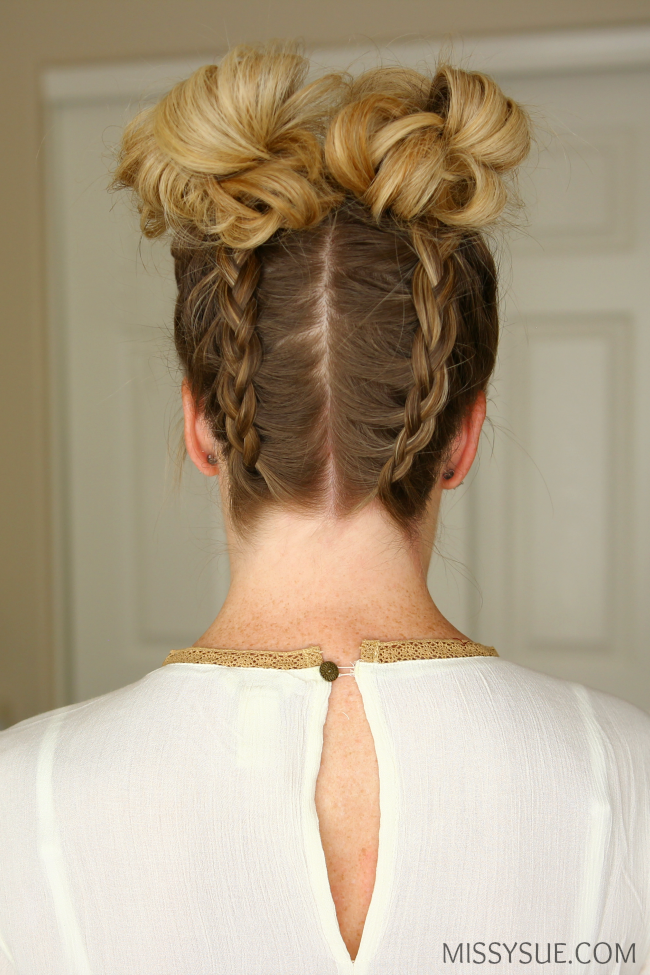
Four Dutch Braids
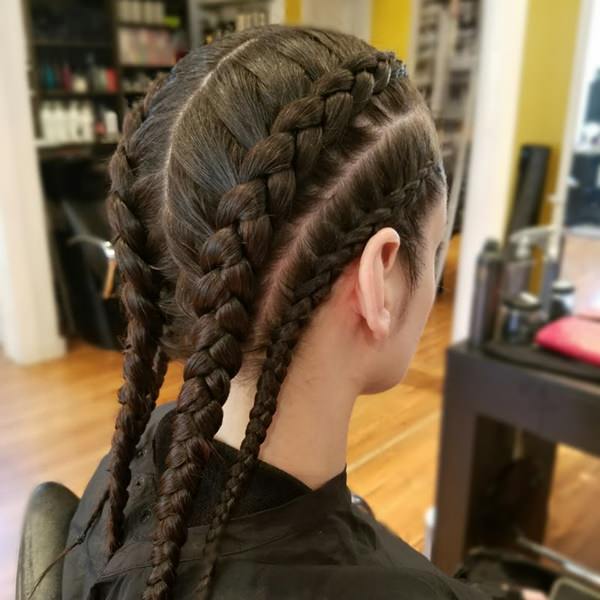
Bohemian Side Swept Dutch Braid
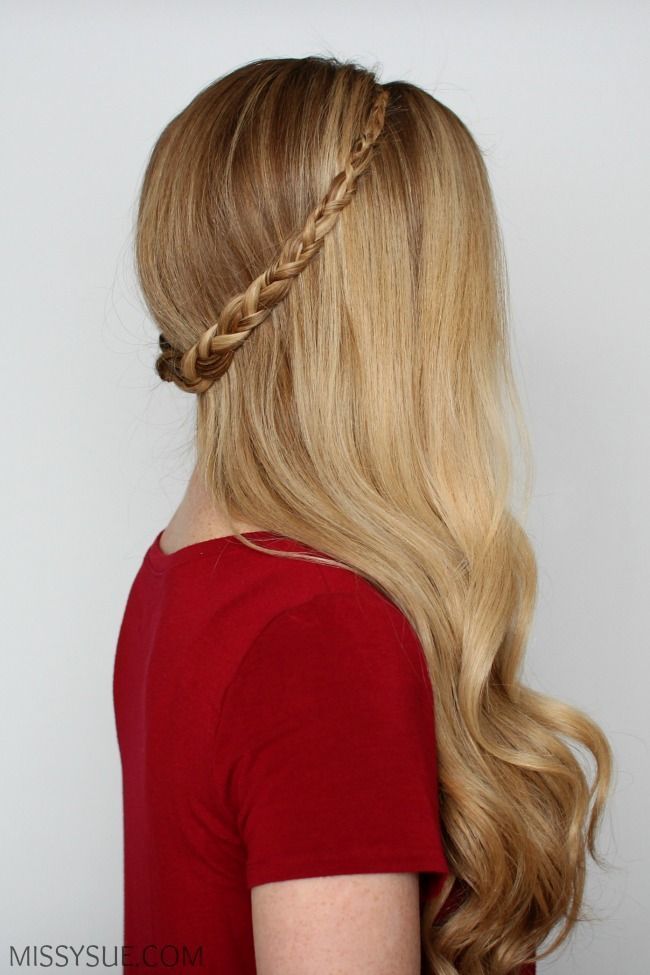
Braided Flower
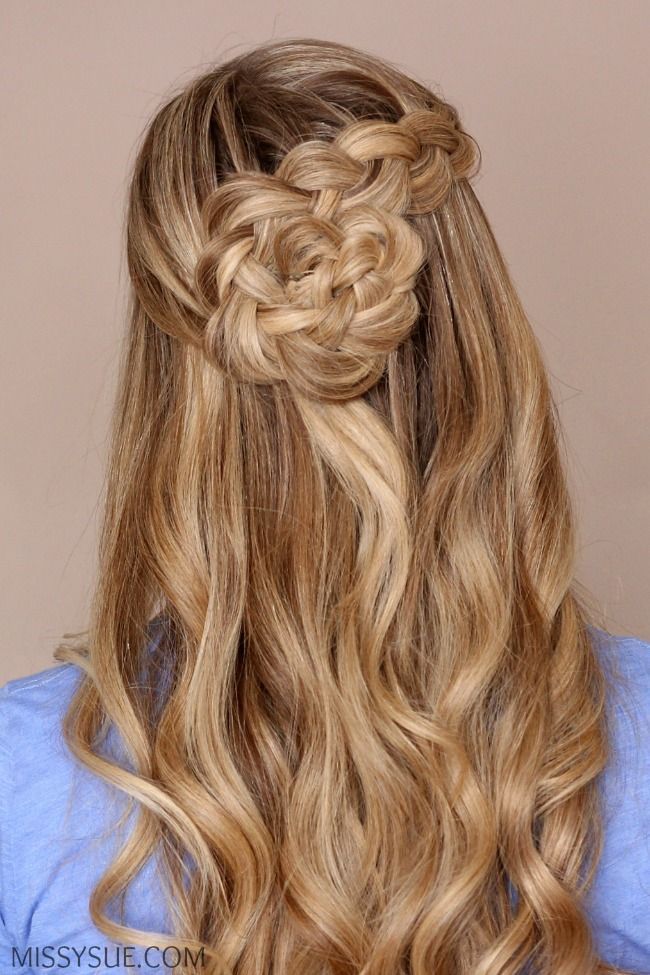
When to Wear the Dutch Braid?
As you just saw, the Dutch braid can be worn in a variety of different ways. However, that doesn’t mean you can wear any Dutch braid whenever you want. The kind of Dutch braid you should wear depends on the occasion, and there is a whole list of events that call for a Dutch braid.
Prom
Prom is a great event o wear a semi-formal Dutch braid. A half-down Dutch braid or a loose Dutch braid updo are two perfect looks to wear to prom because they look elegant but also youthful. Loose Dutch braids are the best choice when you want to look like a princess, but not a queen.
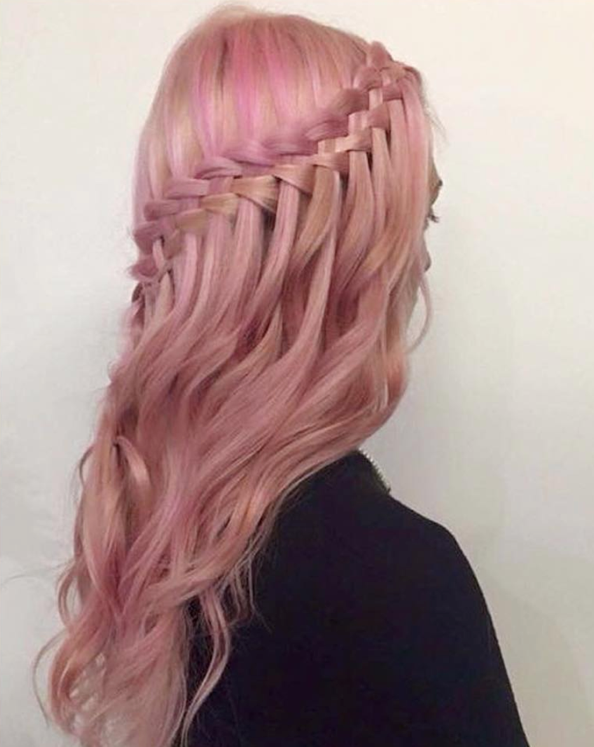
Dutch braids are also an excellent choice for weddings, for both the bride and the guests! Generally, the go-to look here is a Dutch braid updo. They key here is to make sure the Dutch braid doesn’t look too informal. A simple, elegant bun, with a Dutch braid incorporated within, is a great look!
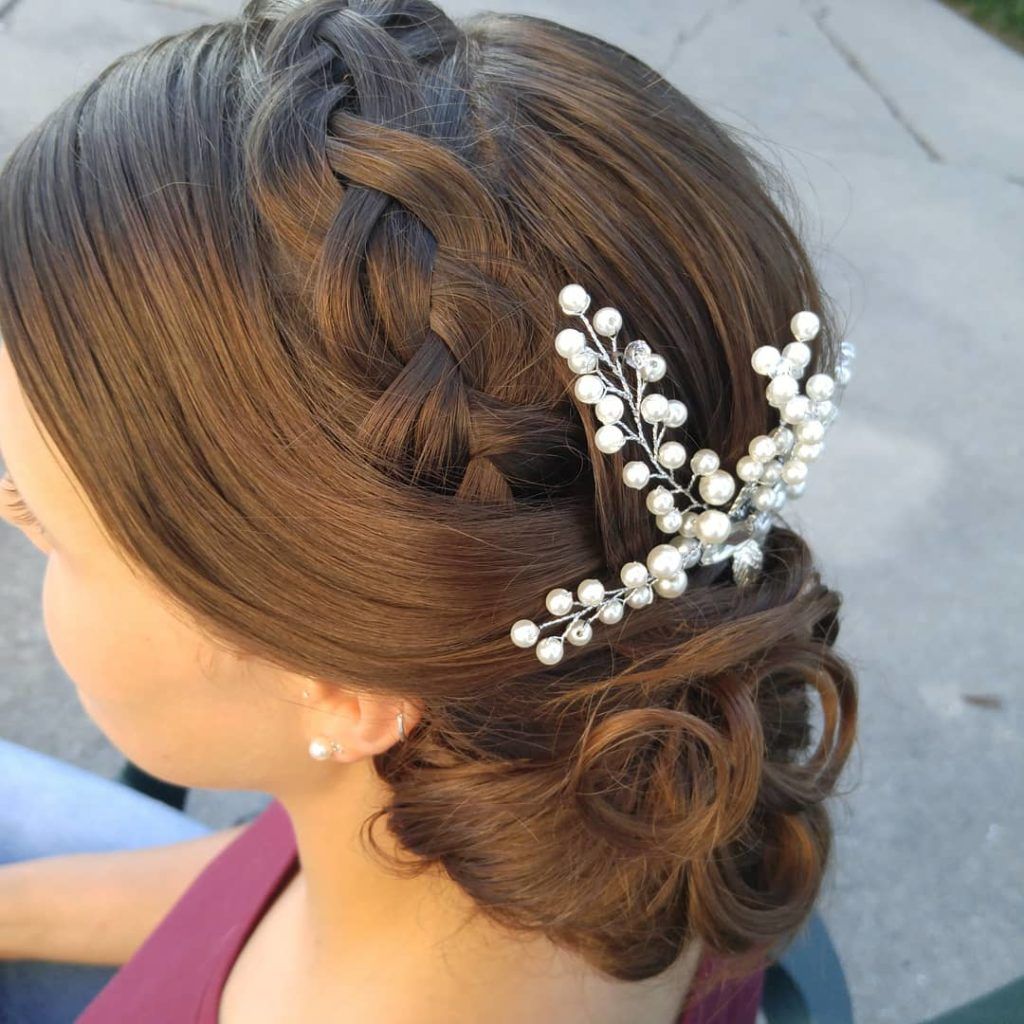
Yes, a quick Dutch braid is also a great hairstyle to run your errands in. Just tie the top half of your hair into a Dutch braid quickly, and you’re good to go, you can also choose to opt for a messy bun. This occasion is perfect for a Dutch braid because it keeps your hair set in place all day.
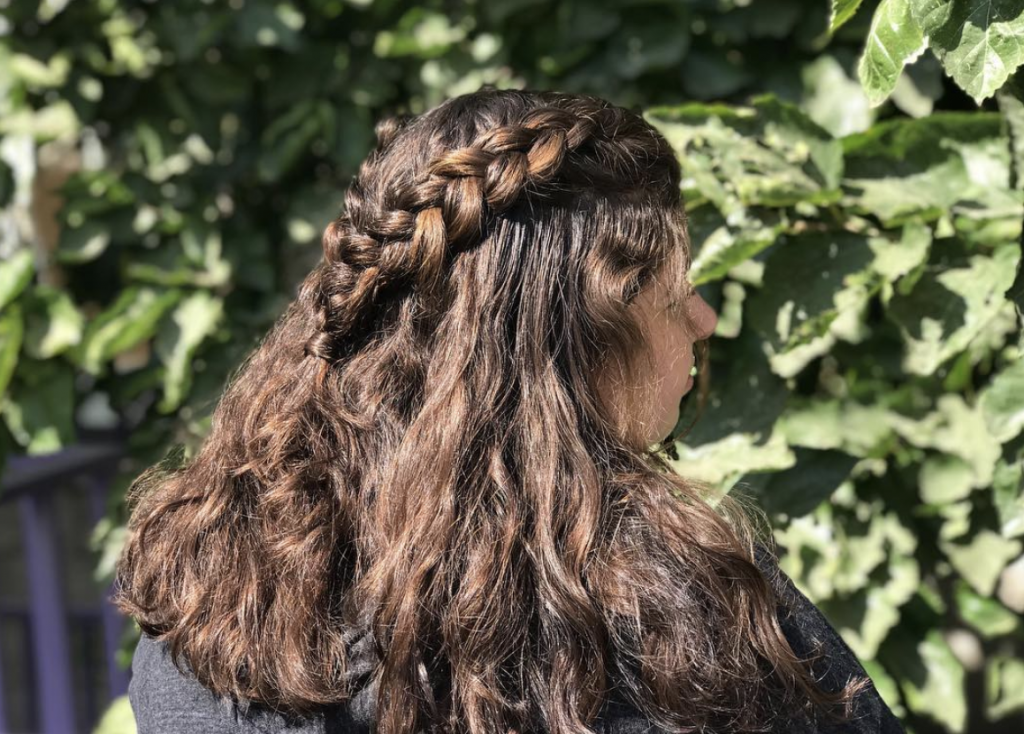
Frequently Asked Questions About Dutch Braids
It’s normal to be curious about Dutch braids, after all, it is a relatively difficult skill to perfect. You may also have other questions about the different styles, suitability of Dutch braids, or even about the well-being of your own hair. We have compiled this list of the most frequently asked questions about Dutch braids for your ease. If you have any more, be sure to let us know!
Are Dutch Braids Bad for Your Hair?
While Dutch braids require using a fair portion of your hair, they are actually not bad for your hair per se. Braids inherently are not harmful to the health of your hair. However, if your technique is wrong they may do some damage. This is why it is crucial to ensure that you braid gently.
If your braid is pulling at your scalp too much, it could cause strands of hair to break away. In addition, if you braid your hair while its wet, your hair is more susceptible to break down and damage. Again, this is why you should never braid wet hair.
In fact, braiding actually reduces frictional hair damage. When you braid your hair, the strands do not have contact with fabrics or objects which reduces their chance of getting damaged by an external factor. So as long as you do not braid too tightly, Dutch braids can actually be good for your hair!
Do Dutch Braids Make Hair Grow?
There is no clear answer to this question. Science has not yet been able to answer whether Dutch braids can make hair grow. They certainly do give off the appearance of healthy hair, because they make your hair look like they have more volume and are thicker in appearance. However, nothing can be said about whether they actually make your hair grow.
What Kind of Hair Do I Need for a Dutch Braid?
This is the great thing about Dutch Braids! They look excellent on all types of hair. For straight hair, Dutch braids are simply easy to do. If your hair type is very curly, you can still do a Dutch Braid! To make things simple for yourself you may want to spray your hair with water so they’re damp and easier to maneuver.
As for length, Dutch braids suit both long hairs as well as medium length hair. They also suit all types of textures as well – silky to frizzy.
Should I wash my hair before braiding?
No! As we mentioned – braiding wet hair can cause hair damage because wet hair is more prone to breakage so avoid at all costs. In fact, two days or three days old hair is the ideal time to make a Dutch braid. This is because by that time some of your natural oils will seep into the hair, it’s texture will be rougher compared to newly washed hair. A rougher texture means that the braid will hold more easily, and last longer.
How to Maintain Dutch Braids
With Dutch braids, it is essential to be careful handling them and maintain them throughout the day. If you don’t focus on maintenance, it is likely that the braid will unravel with time or start to look messier (and not in a good way)!
One way of maintaining your Dutch braid is by applying a sealing product to your hair, moisturizer works well as an alternative. Apply a sealing product to your scalp before you begin braiding. This will give you added moisture, by sealing in your scalp’s moisture. It will also prevent the fizziness that comes so frequently with braids while also providing your scalp with essential vitamins and minerals.
One great way to maintain your Dutch braids is by using a mouse or a styling foam. When making the Dutch braid or braids, apply a mousse to the hair first. Make sure to massage the mousse into the hair thoroughly.
Once the mousse has set in your hair, begin braiding! The mousse guarantees that your hair will hold on to the braid for a longer period of time than usual. The shape of the braid won’t change, and neither will its strength.
If you like keeping your braids in for a long time, then you need to take extra care when you go to bed at night. If you’re sleeping in your braids try to make sure your pillowcase is satin or silk; this prevents any frictional damage to your braid and helps it maintain its original shape. If you don’t have a silk or satin pillowcase then try to tie a silk or satin scarf on your hair to prevent your braid from making direct contact with the rough material of your pillowcase.
It’s also important to frequently wash your braids, if you keep them in. The minimum should be at least once every two weeks. Despite the fact that your hair is protected, there is always a buildup of dirt and sweat on your scalp. If you don’t want the annoyance of getting your braids wet, however, you can simply dry wash them with a moist towel or cloth. Just dampen the cloth, add shampoo and wipe it on your scalp.
For frequent braiders, it’s important to avoid constant up-dos. If you’re someone who braids her hair every day or keeps in braids for multiple days, then avoid always having your hair up. Up-dos put extra pressure on your hair, not only are they wound tightly into a braid but they are also pulled upwards. Hence, if you wear an up-do today, try to wear your hair down tomorrow and avoid unnecessary damage.
Celebrity Dutch Braids
With the rise in popularity of the Dutch braid, it was inevitable that we would start seeing this hairstyle on the red carpet. Many celebrities have worn this look and you can take inspiration from them, just as we have!
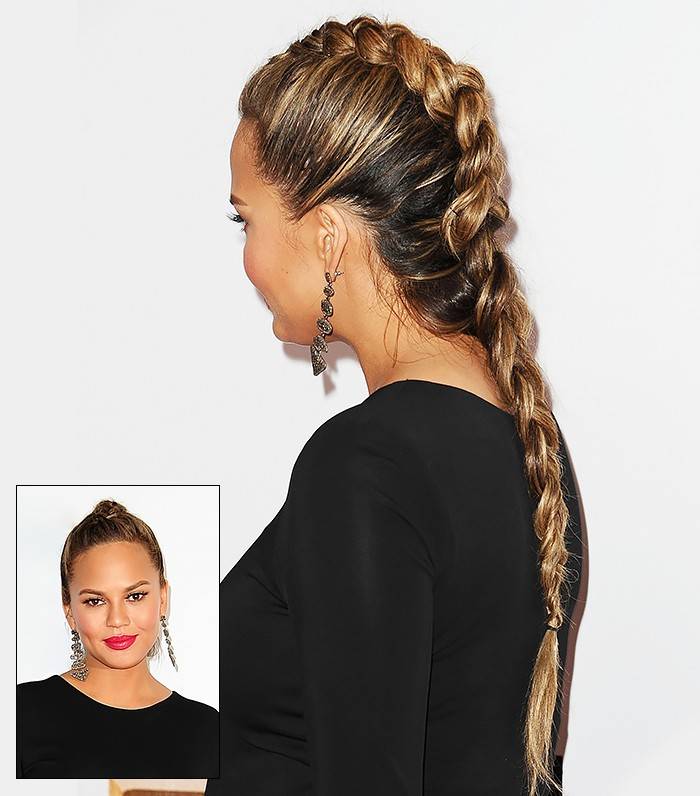

Mooney Rana rocked the red carpet in a Dutch braid ponytail.

Kate Bosworth looks effortlessly chic in this asymmetrical Dutch waterfall braid.
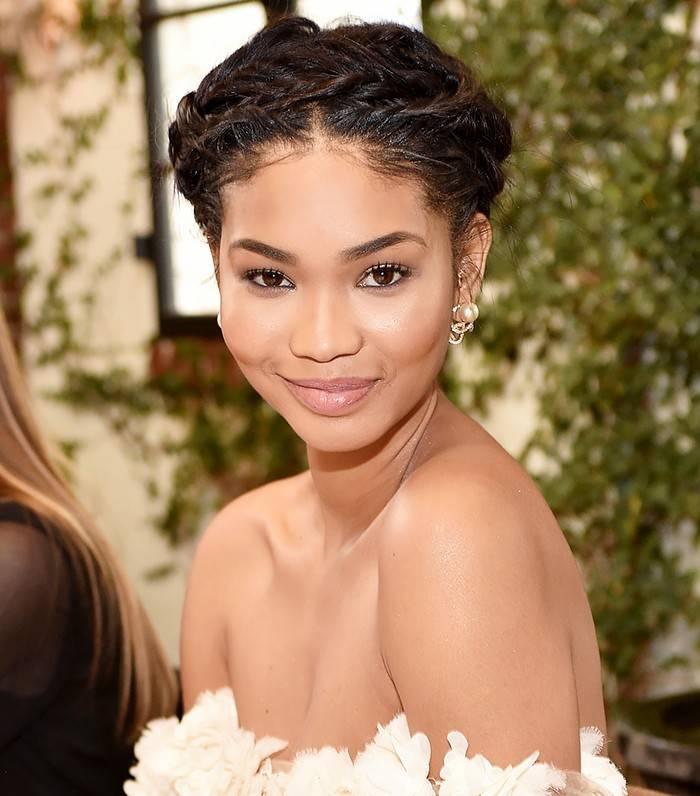
Supermodel Chanel Iman looks like an angel in her Dutch braid crown.
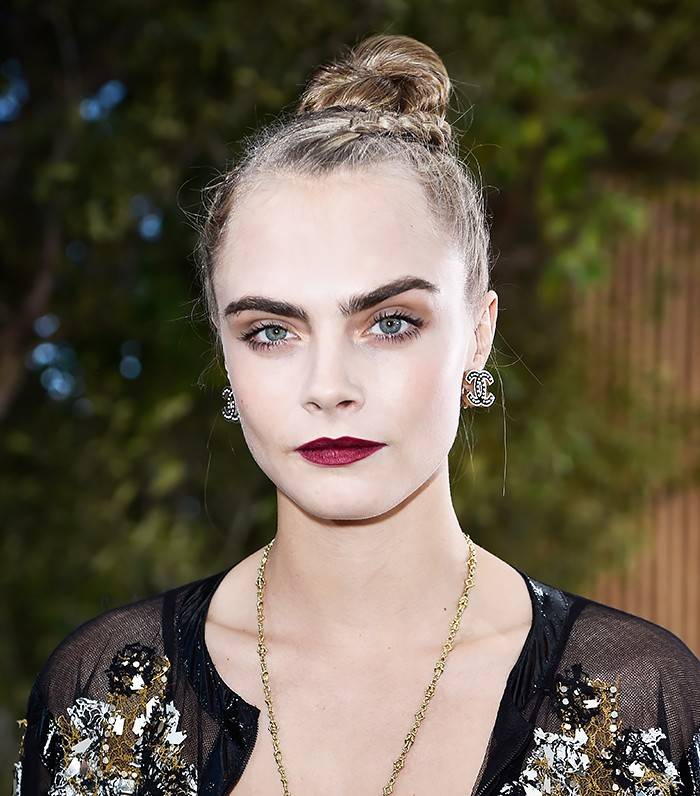
Supermodel Cara Delevingne supports a Dutch braid with a high bun.
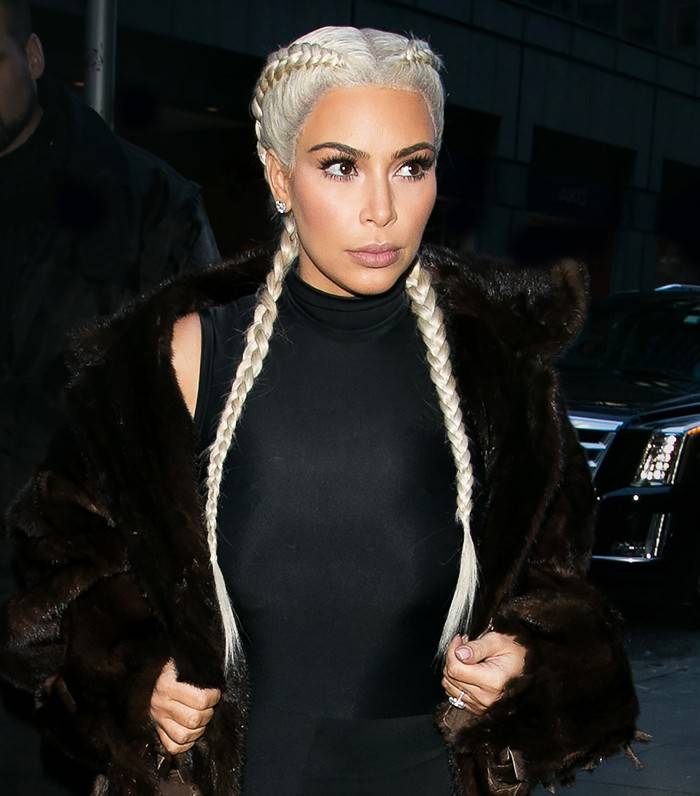
Kim Kardashian in her famous pigtail Dutch braids.
Rihanna supporting a side Dutch braid and crown in her statement red hair.
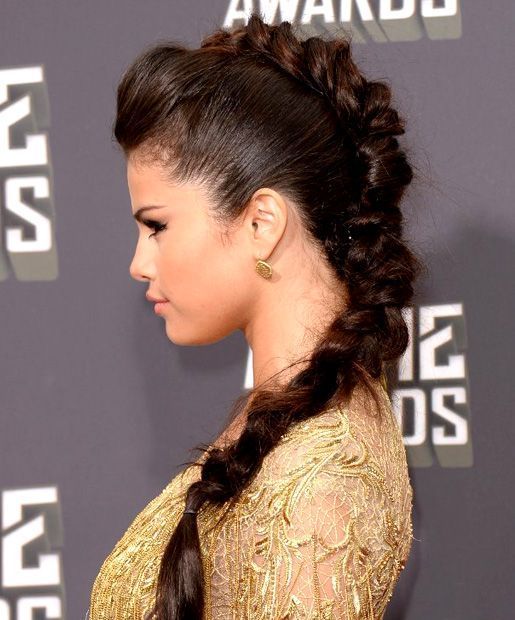
Selena Gomes supporting a Dutch braid in a Mohawk style at the 2013 MTV Movie Awards.

Olivia Munn looks stunning in pigtail Dutch braids.
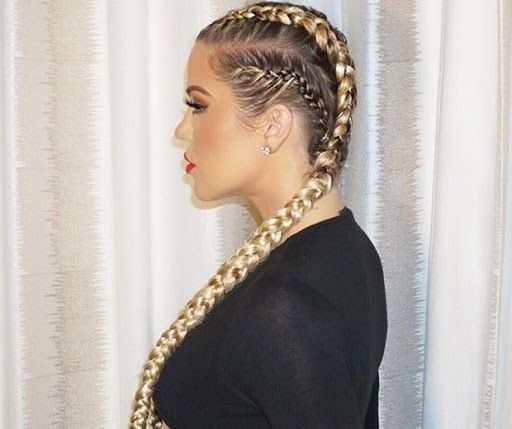
Khloe Kardashian shows off what is now a signature look for her, four Dutch braids.

Jennifer Lawrence’s character Katniss Everdeen, in the Hunger Games, supported a side Dutch braid in the films.

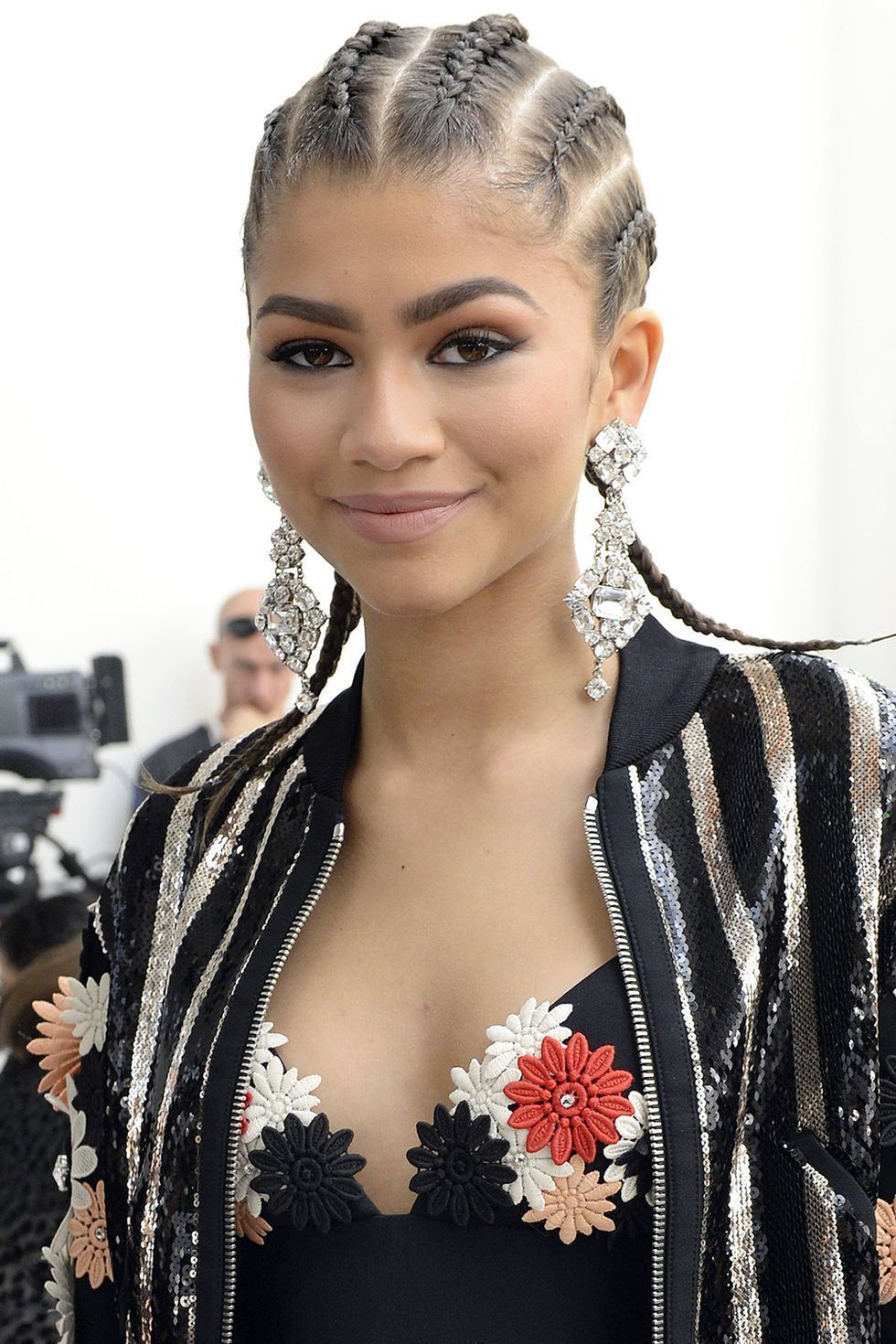
Zendaya stepping onto the red carpet with multiple Dutch braids
Conclusion
Dutch braids, despite originating hundreds of years ago, are a very famous hairstyle today.
Perhaps this is because people keep innovating new hairstyles that incorporate Dutch braids, or simply because Dutch braids are not as complicated as other types of braids, and do not take a lot of time to learn or perfect.
Knowing how to do a dutch braid is a skill that will prove to be useful in life; you’ll be able to make Dutch braids on your hair as well as on others. But, don’t try to braid someone else’s hair on your first few tries. The art of Dutch braiding cannot be perfected overnight, but with our step-by-step guide, it’ll take quite a short while.
We hope this comprehensive guide was good enough to introduce you into the world of Dutch braids. Visit us more for guides just like this!


